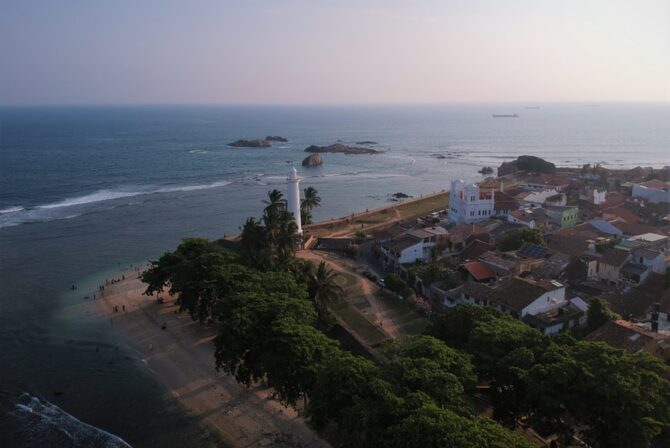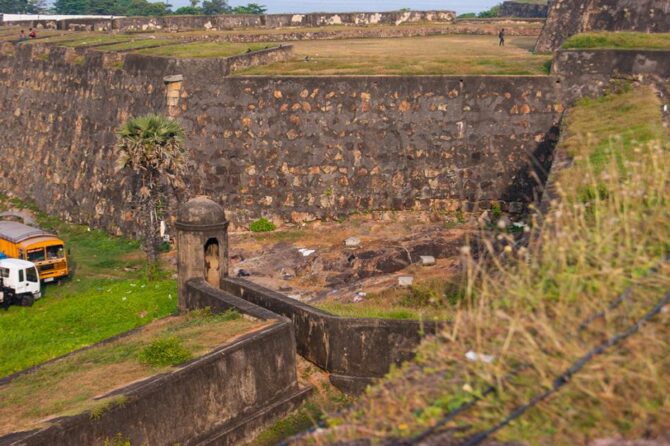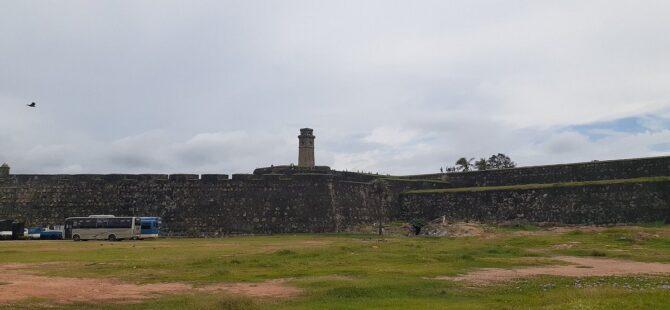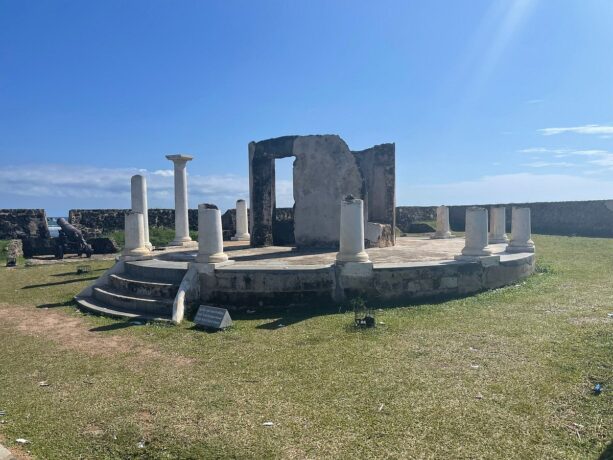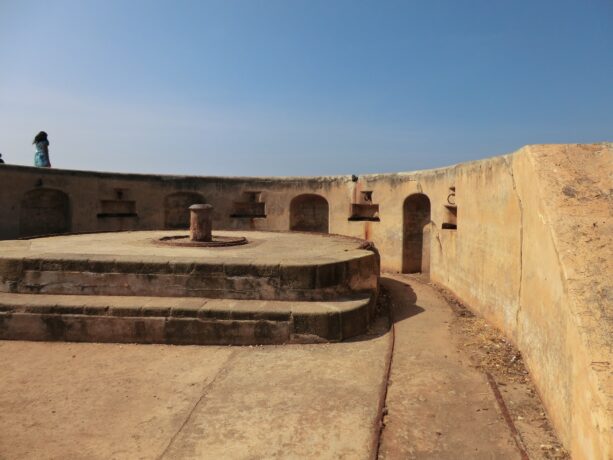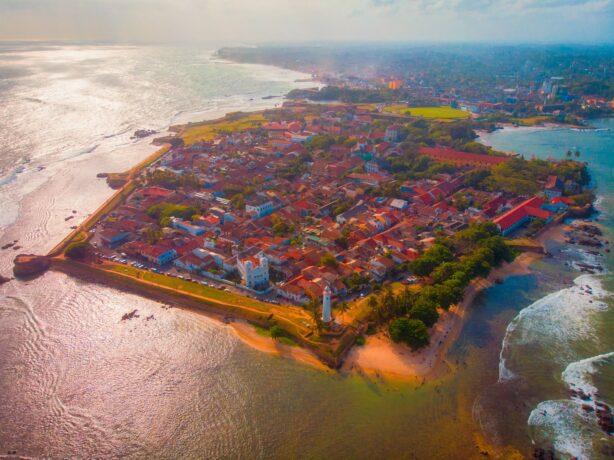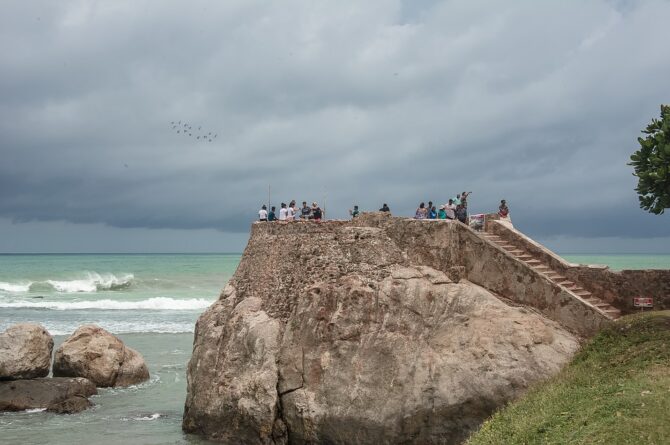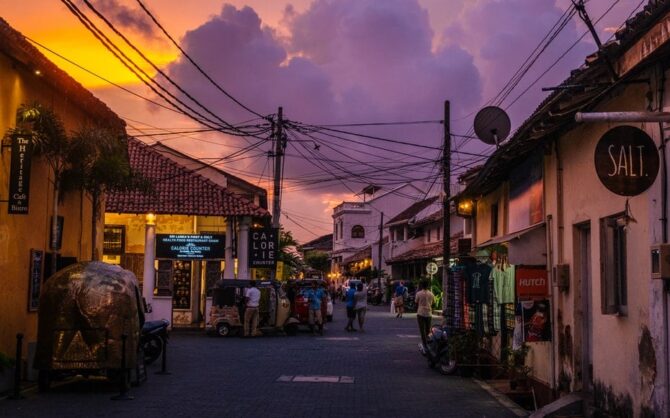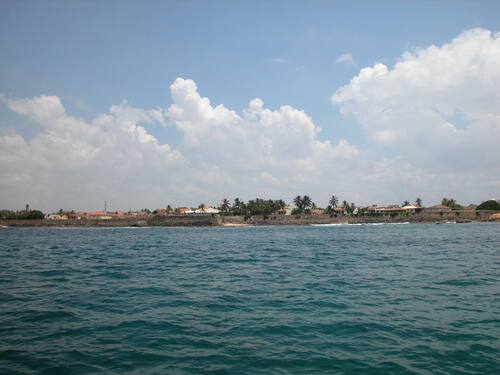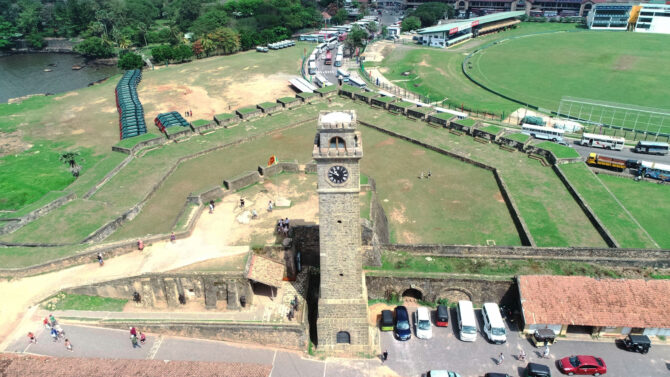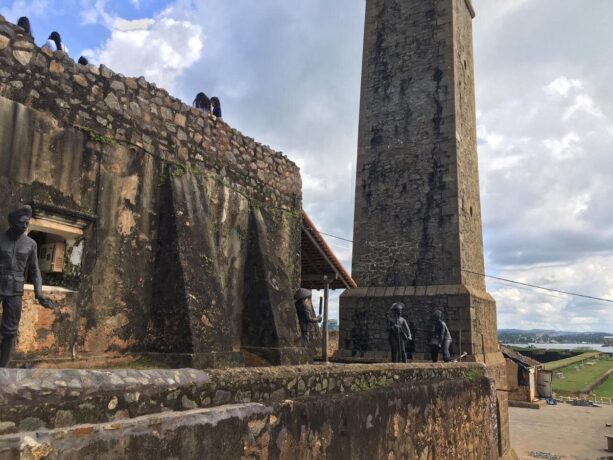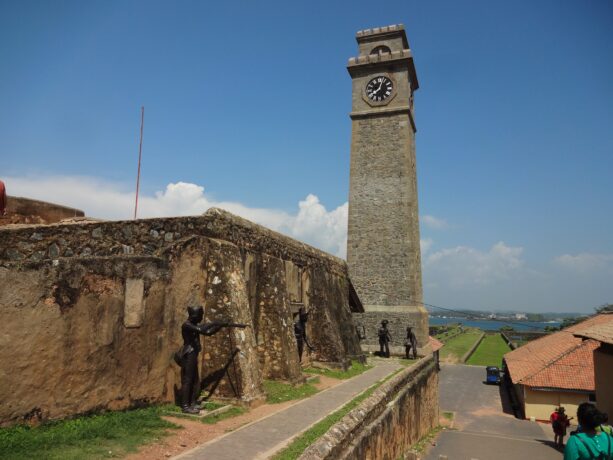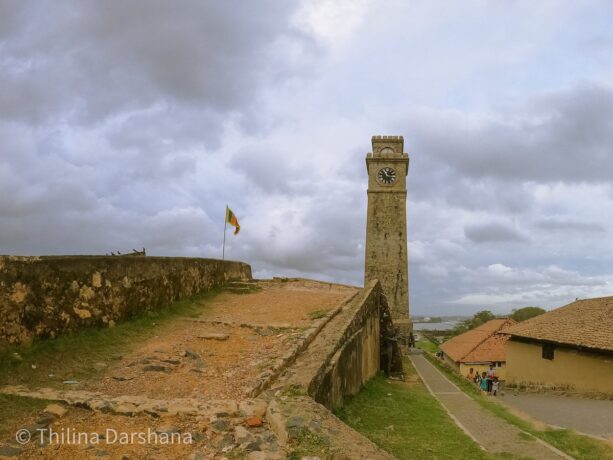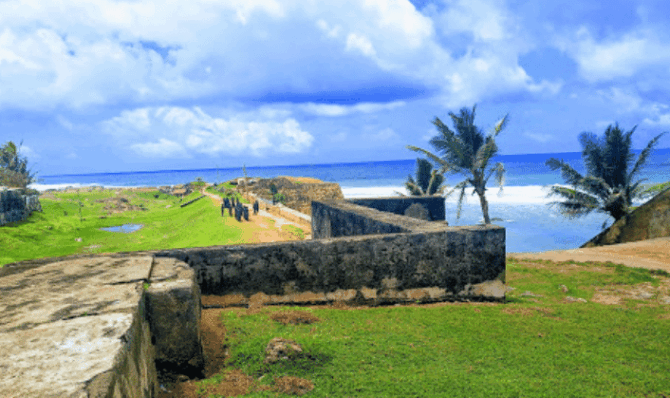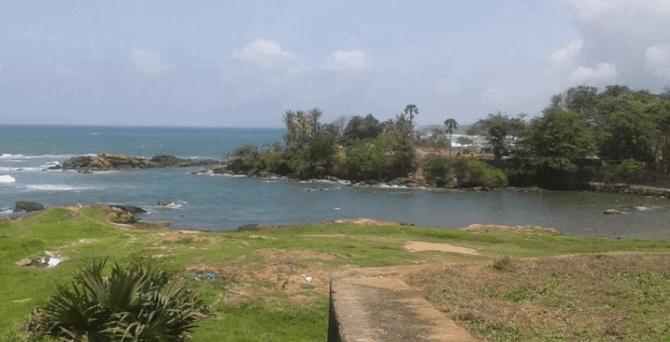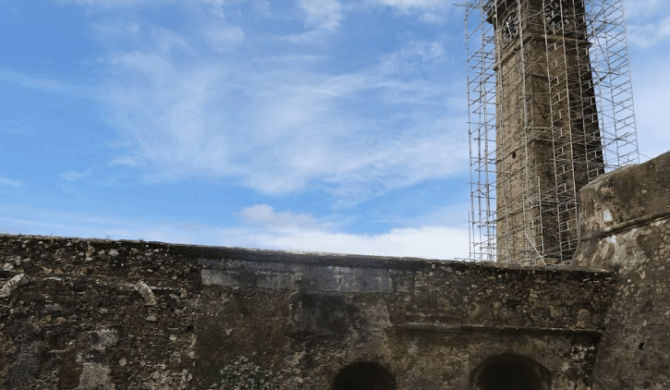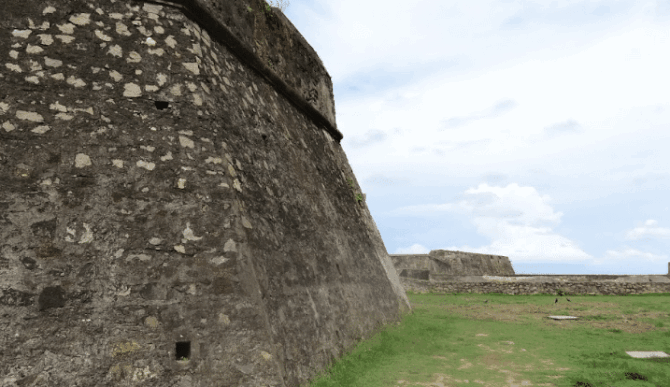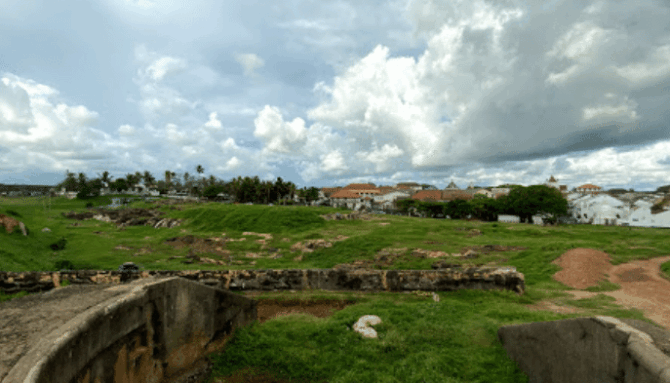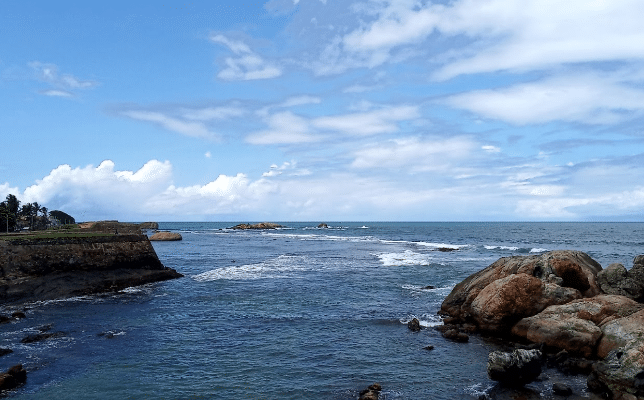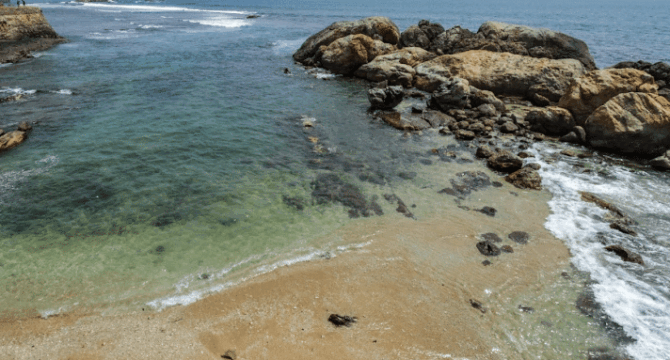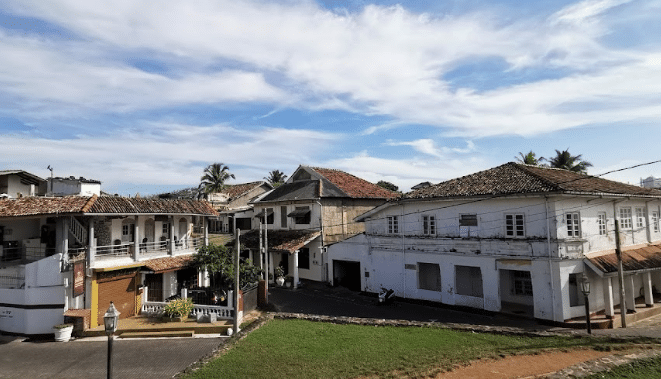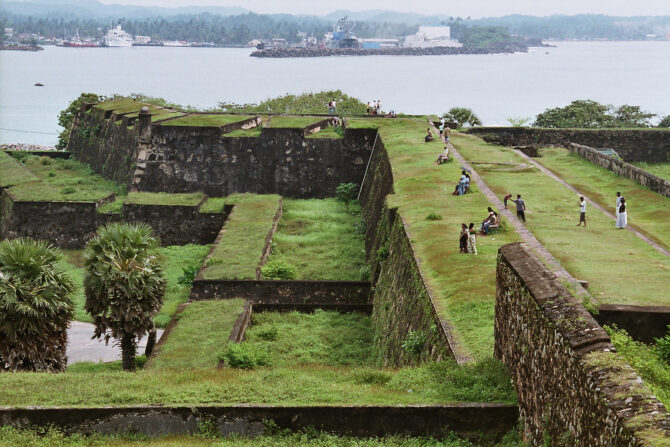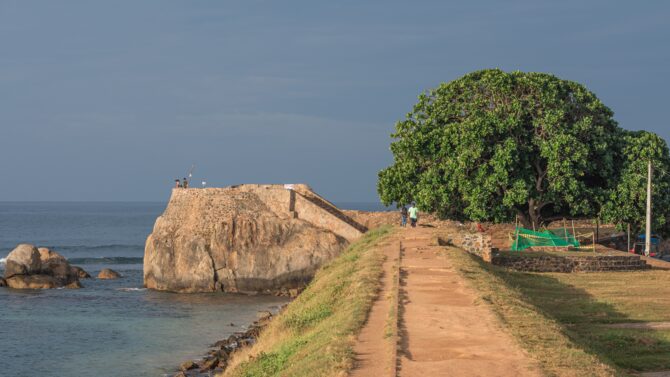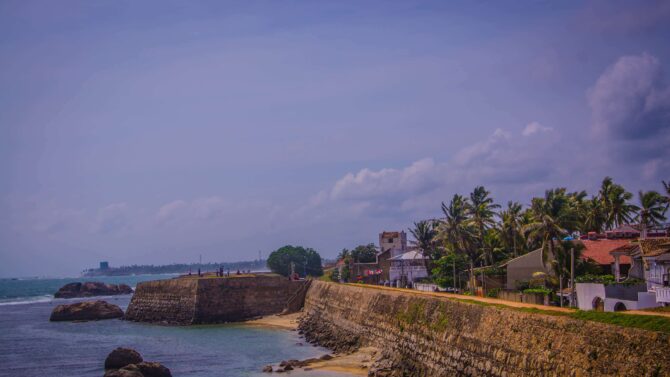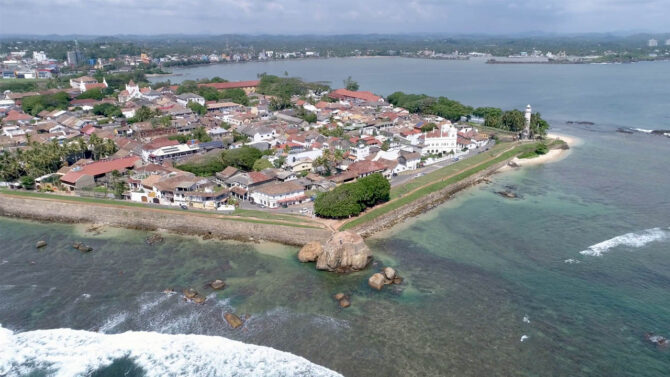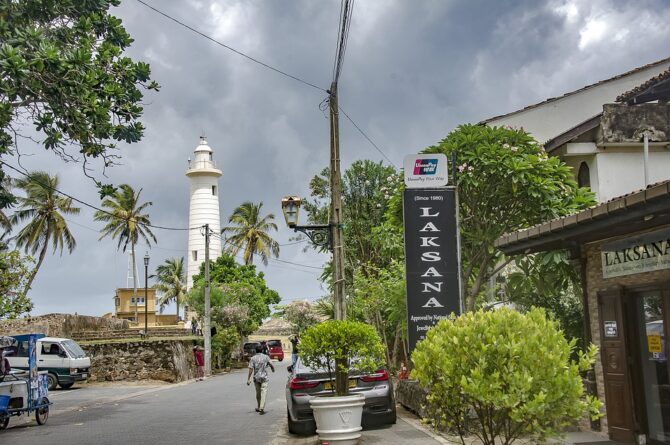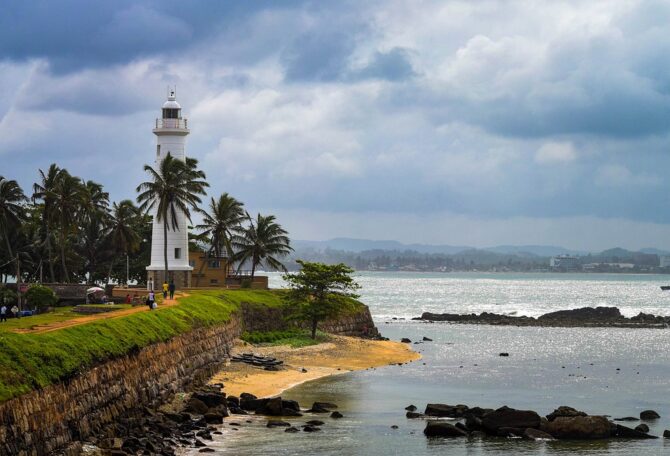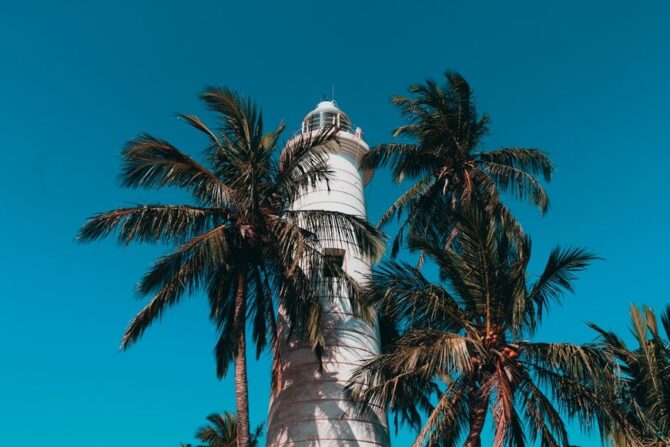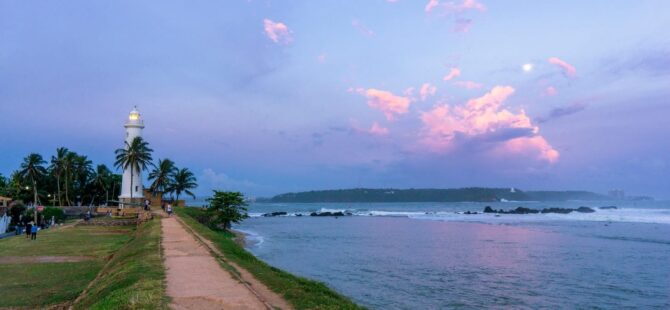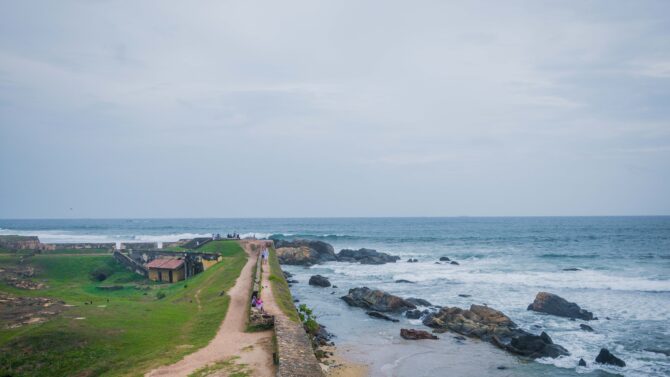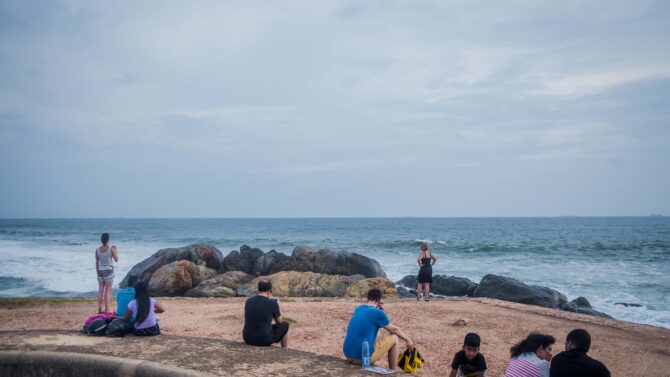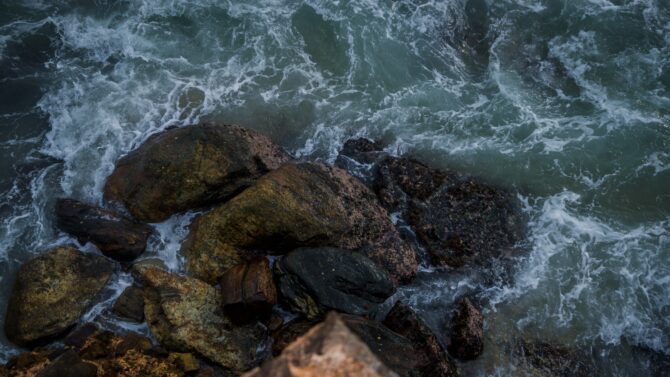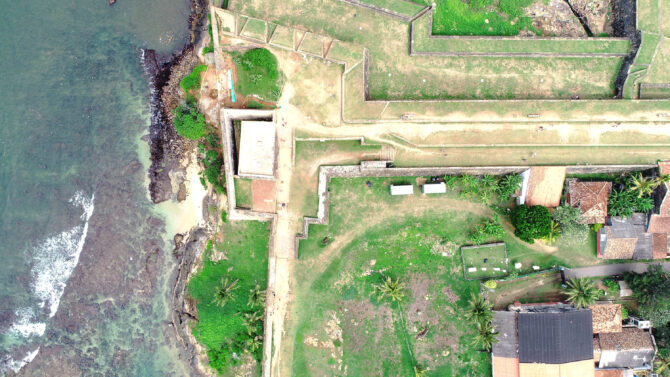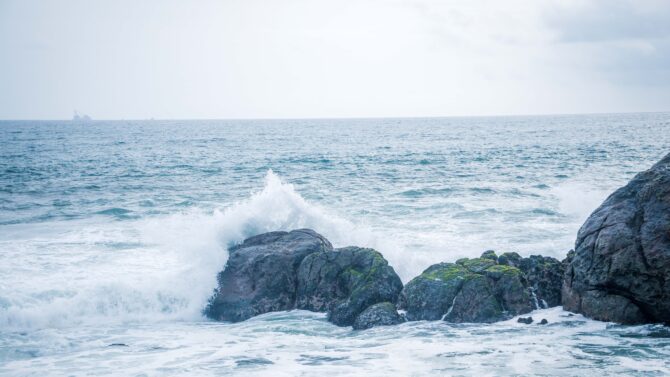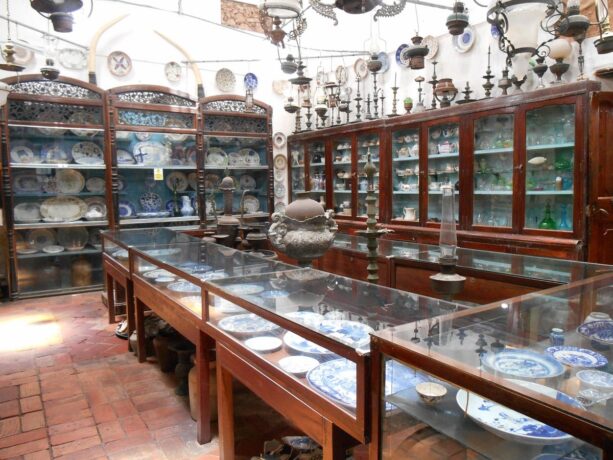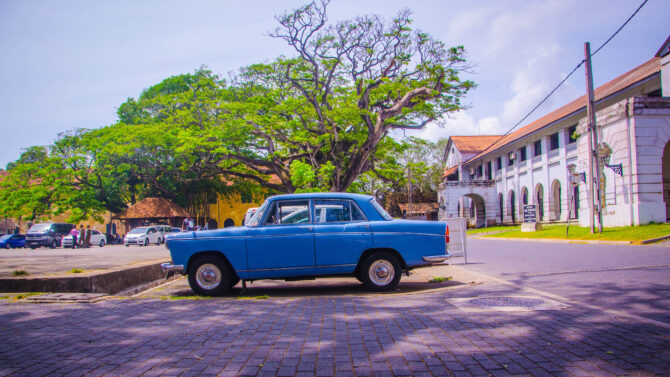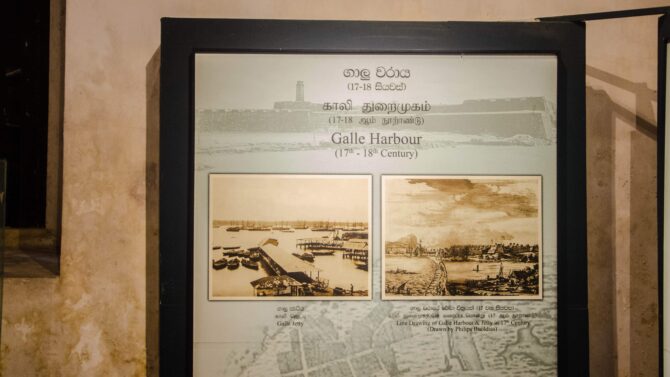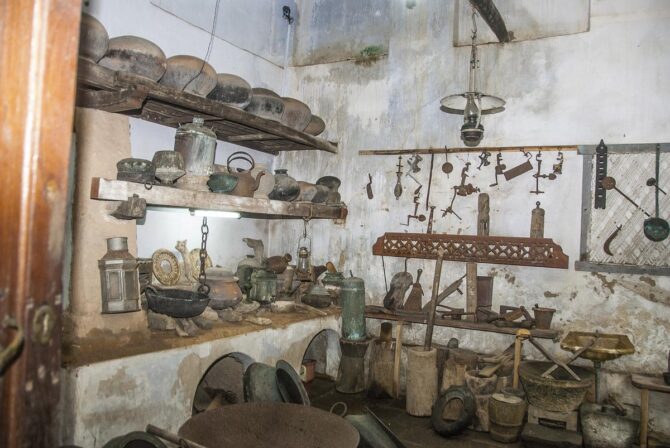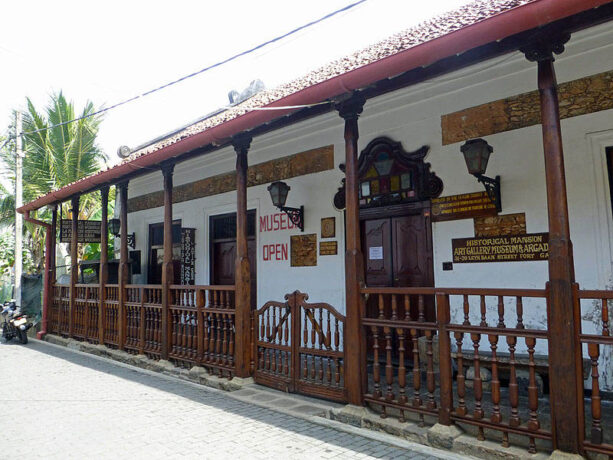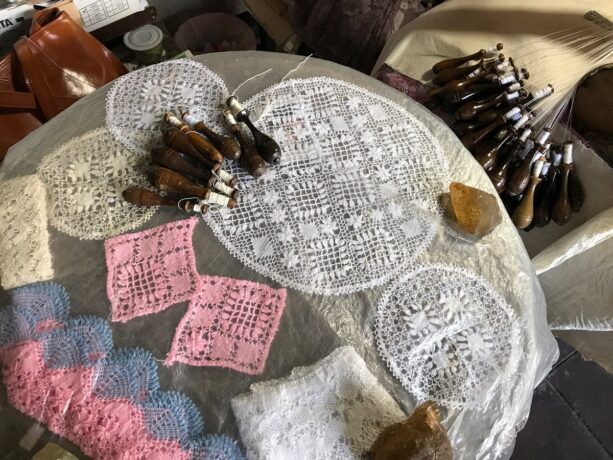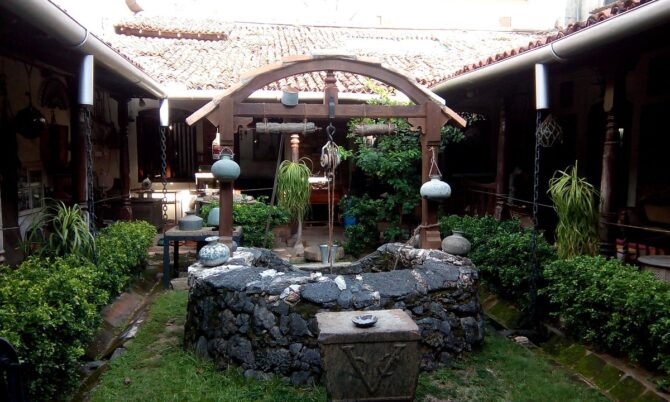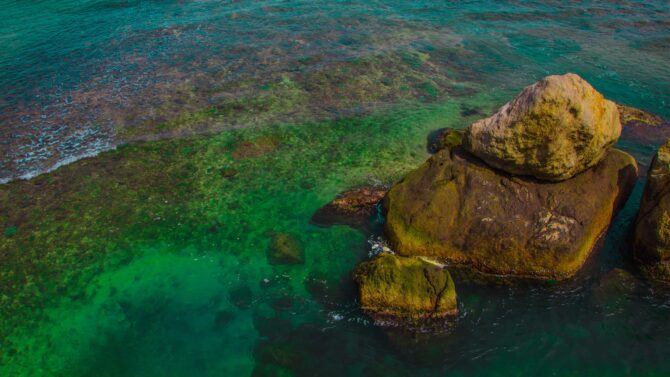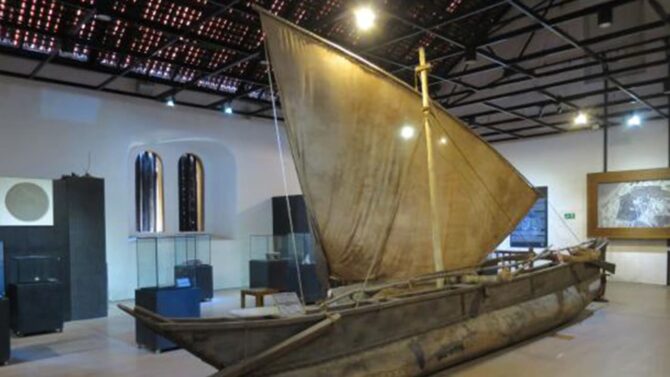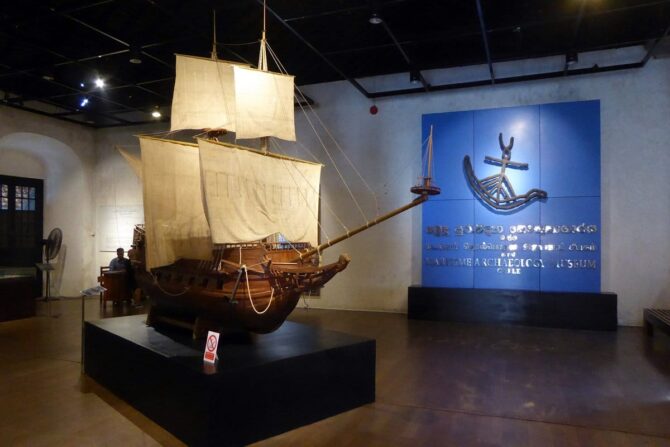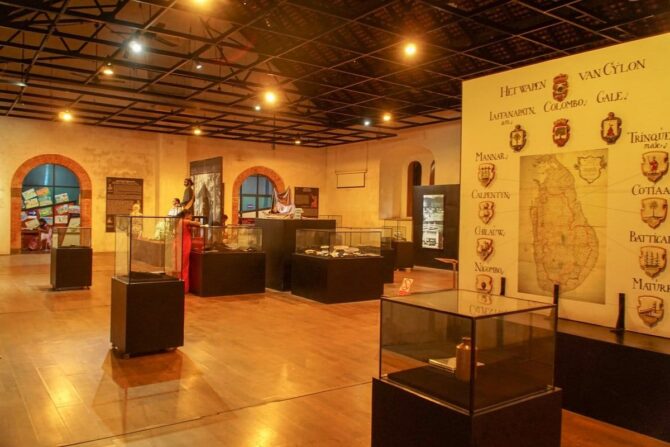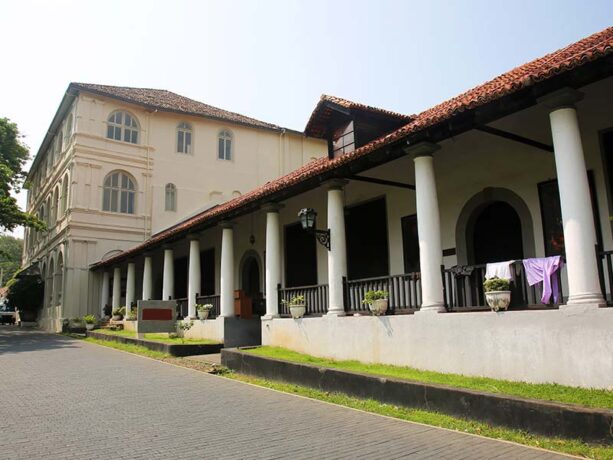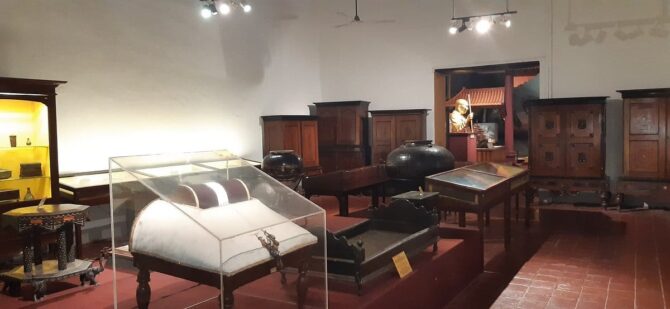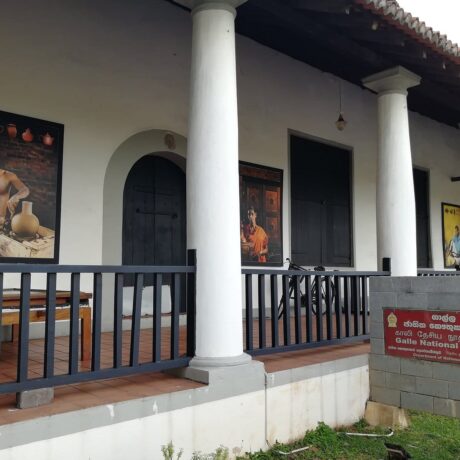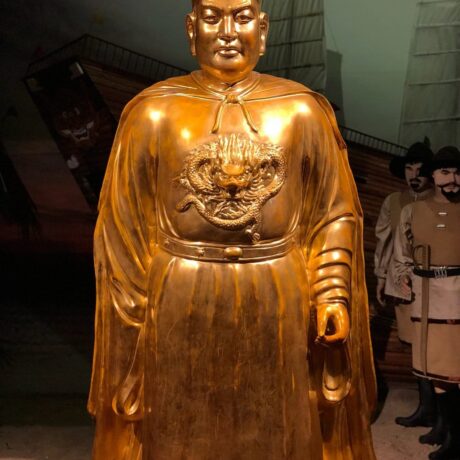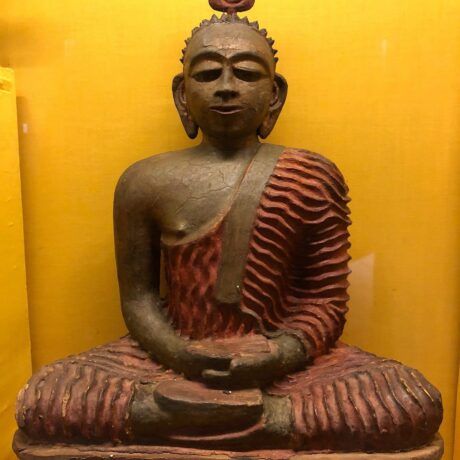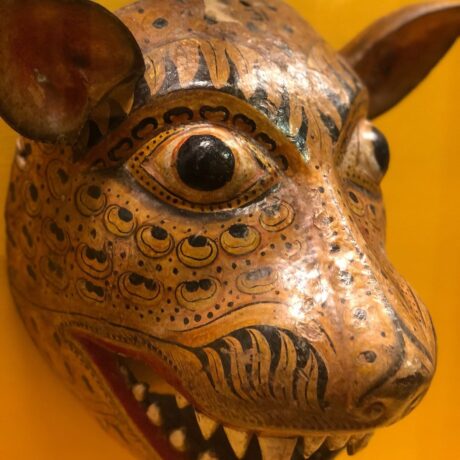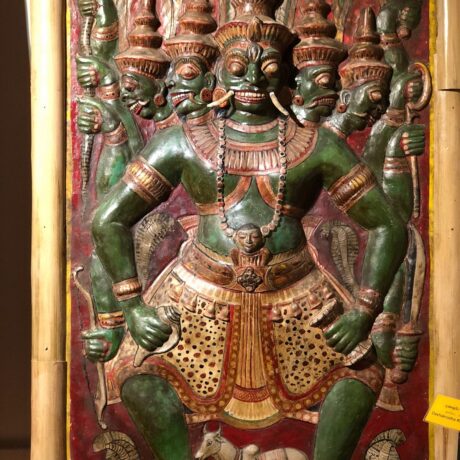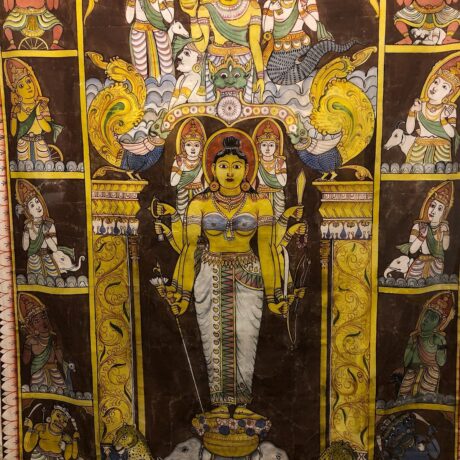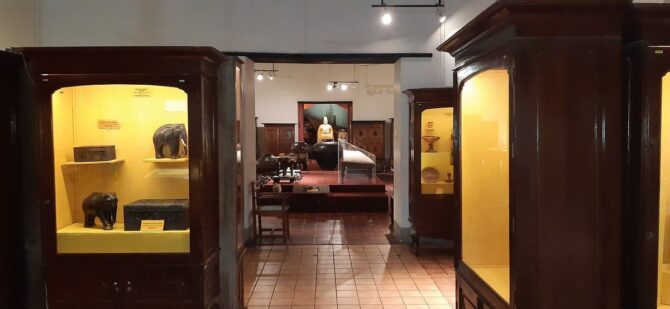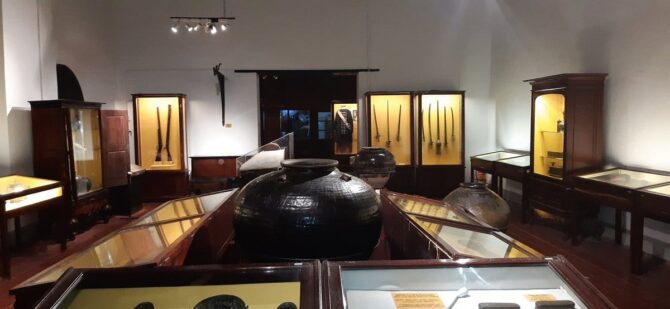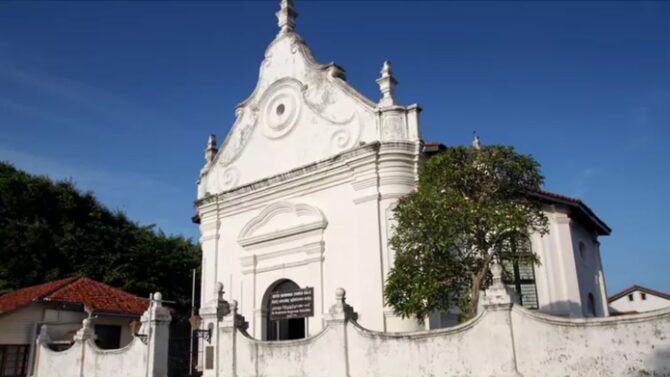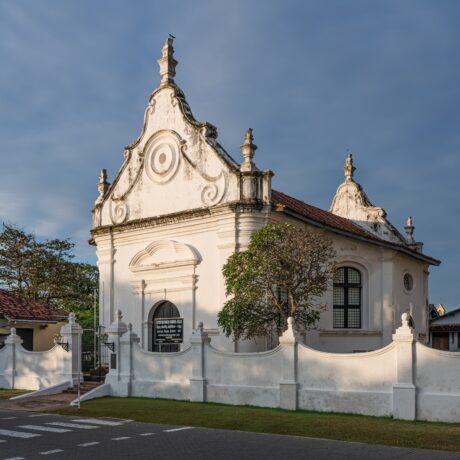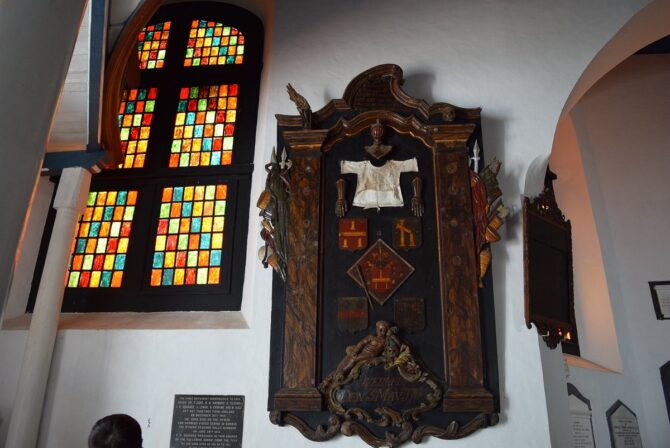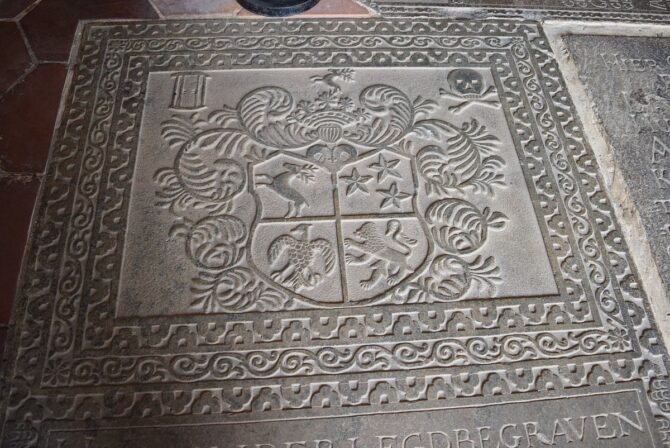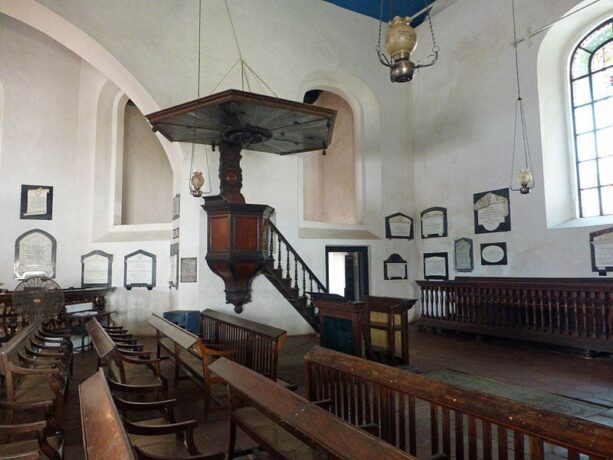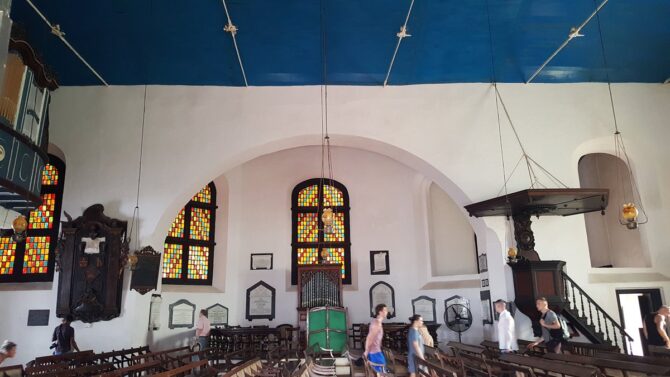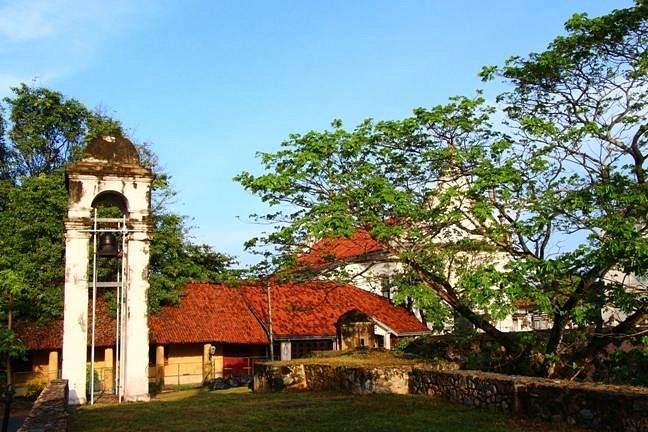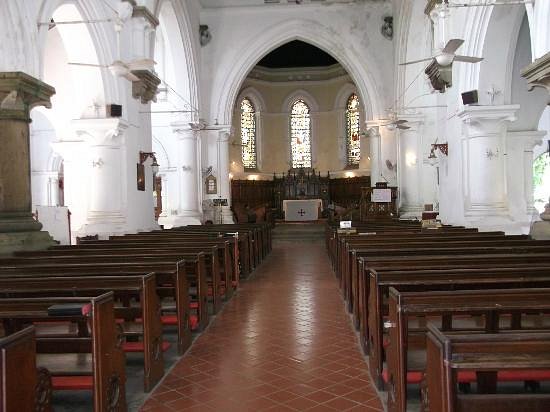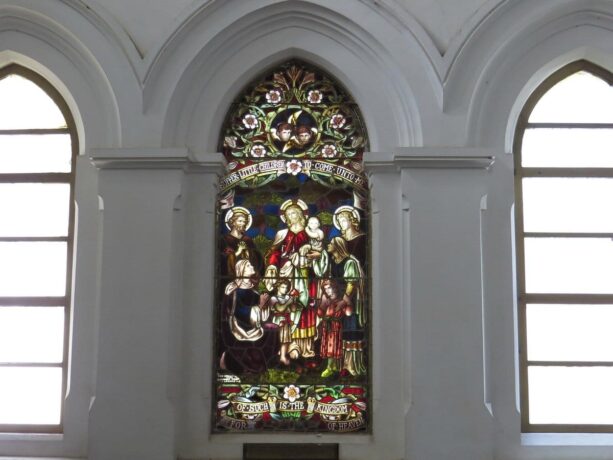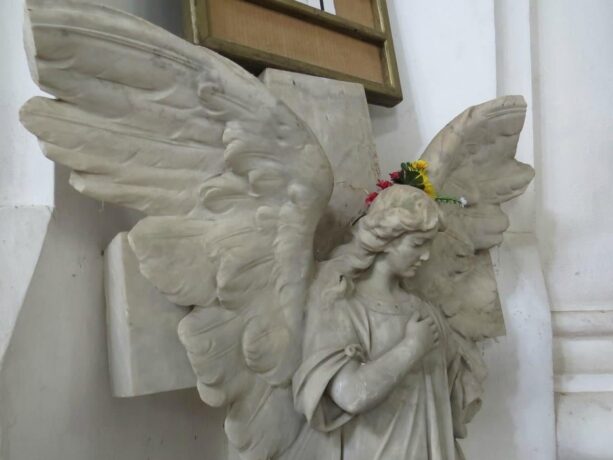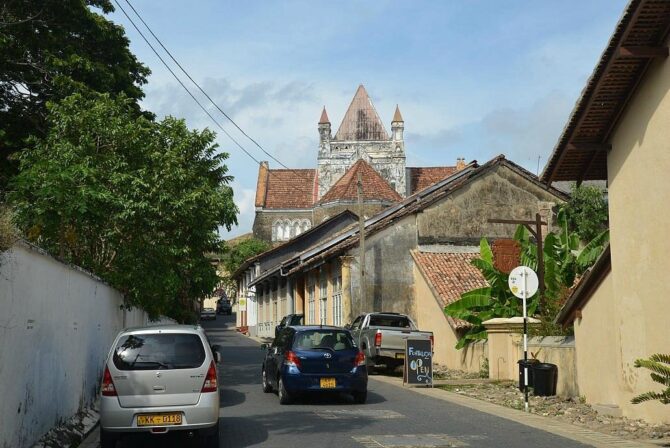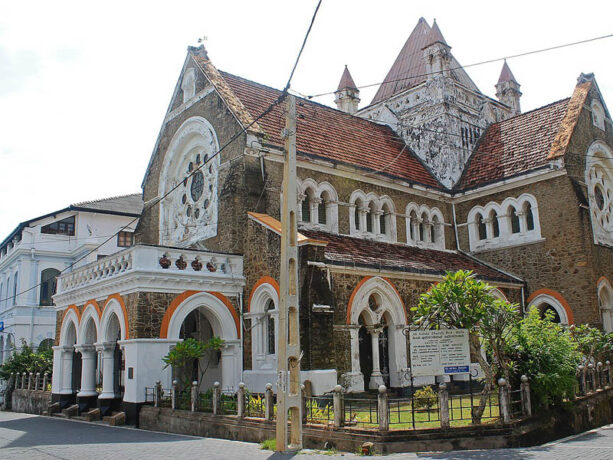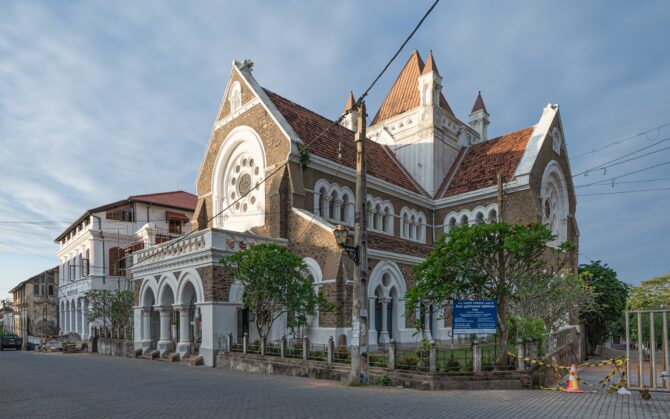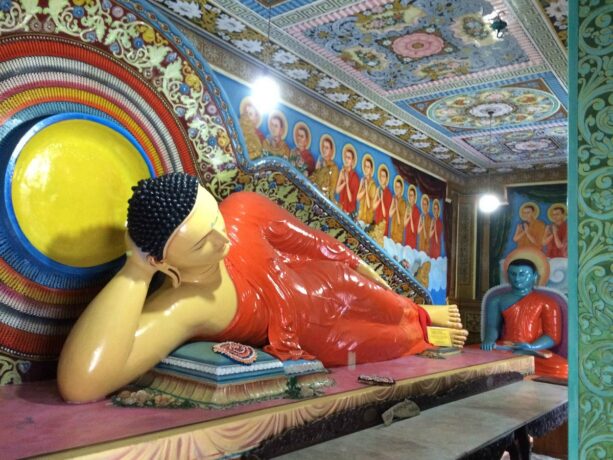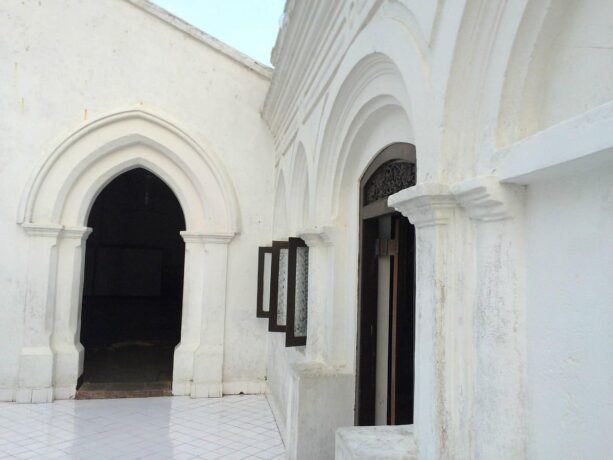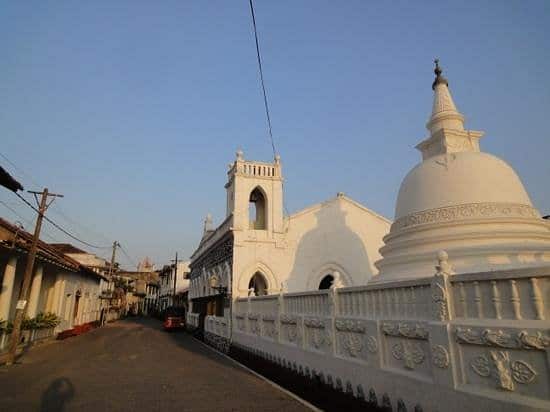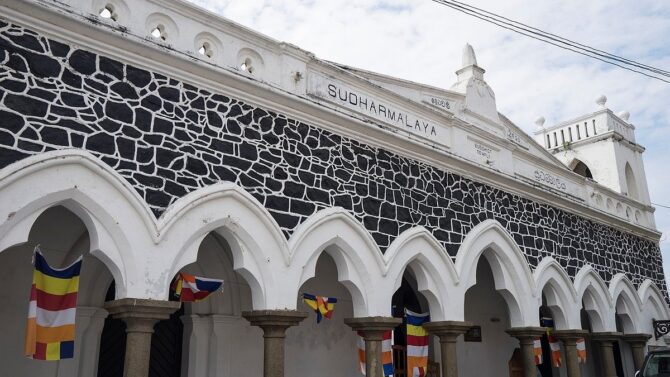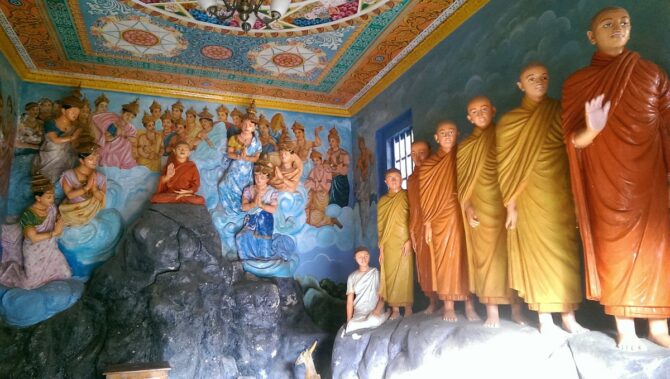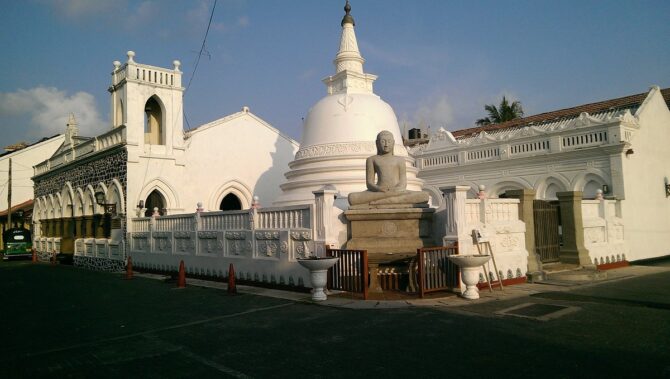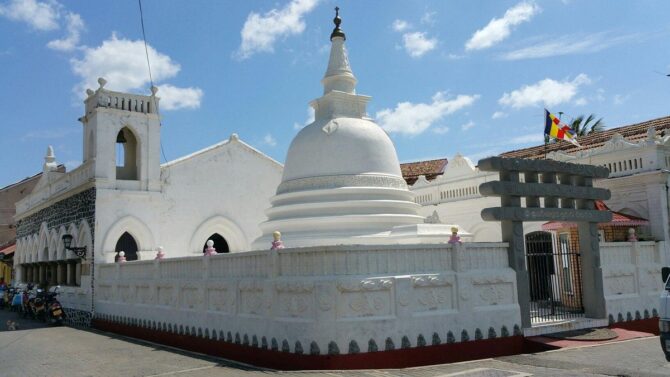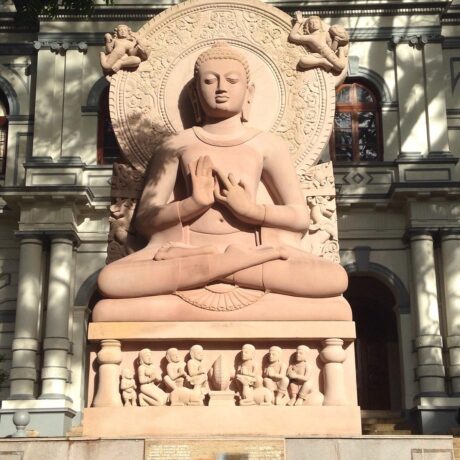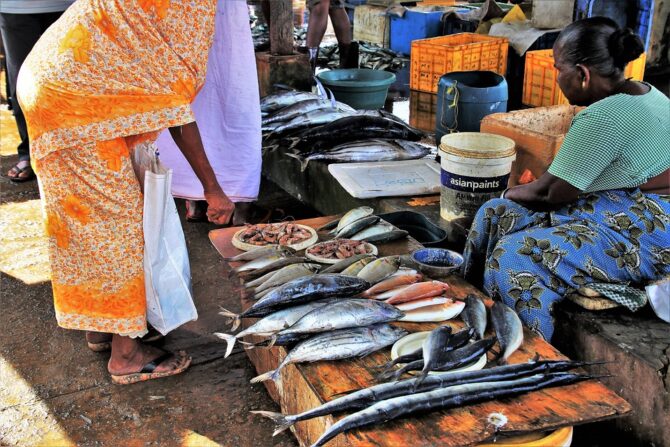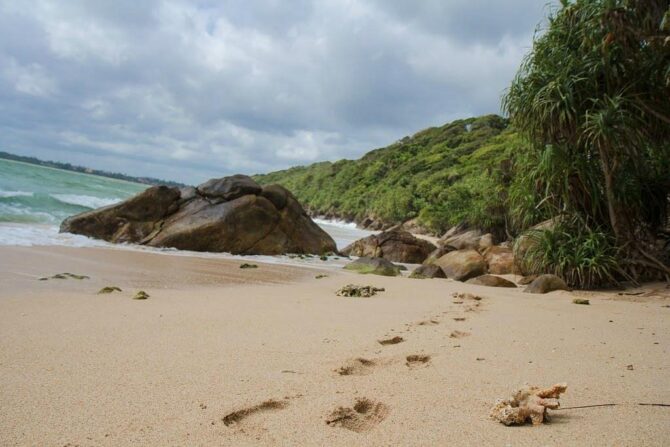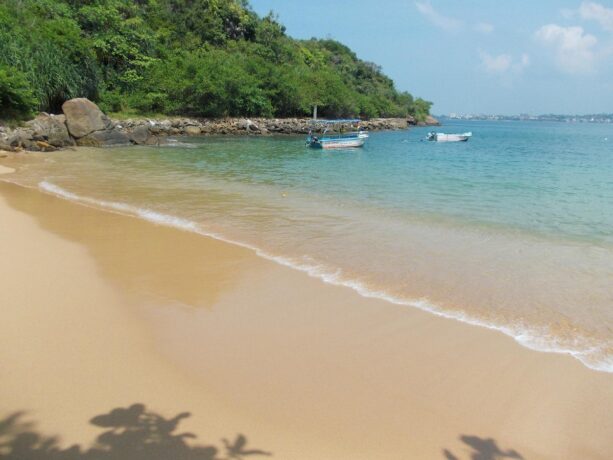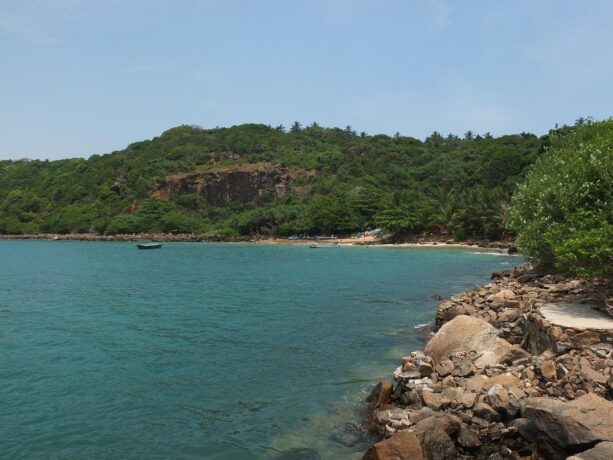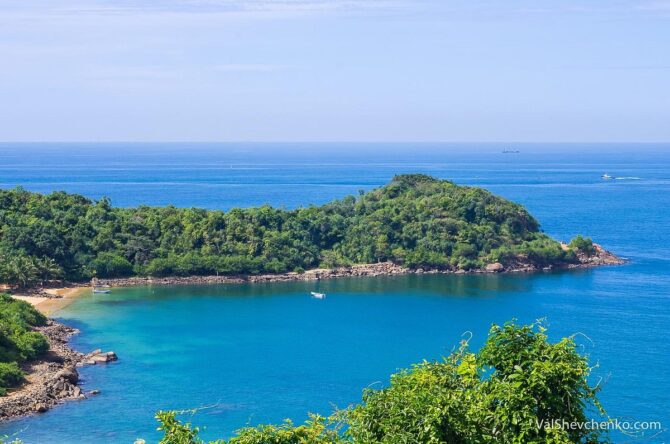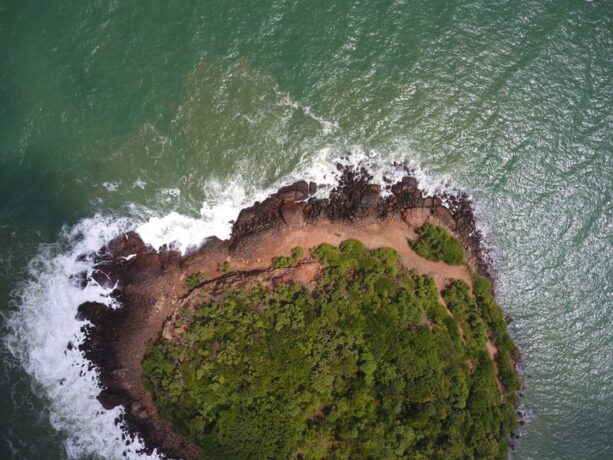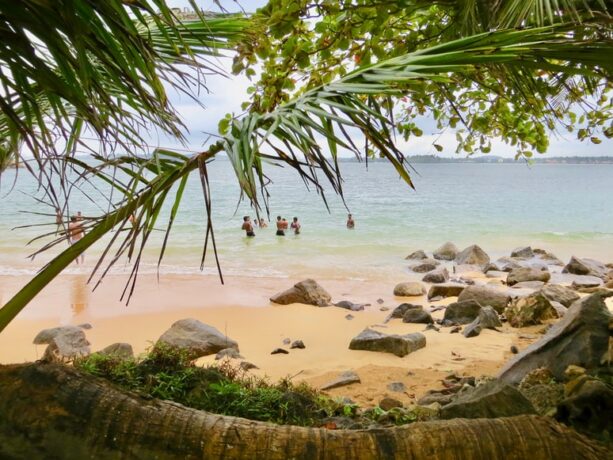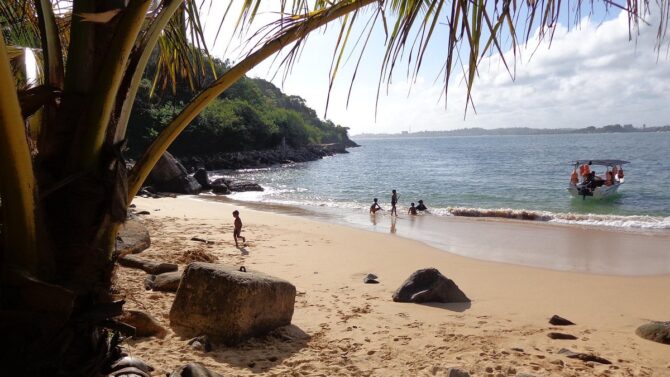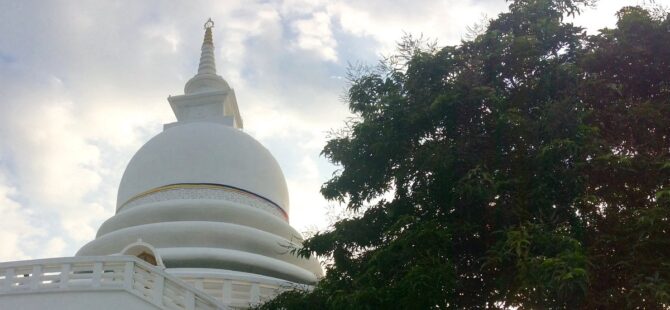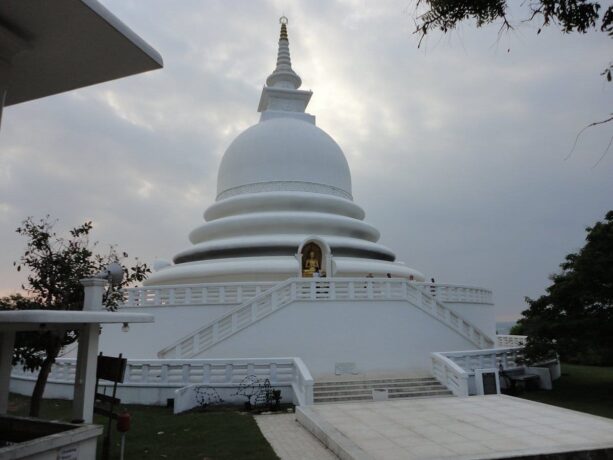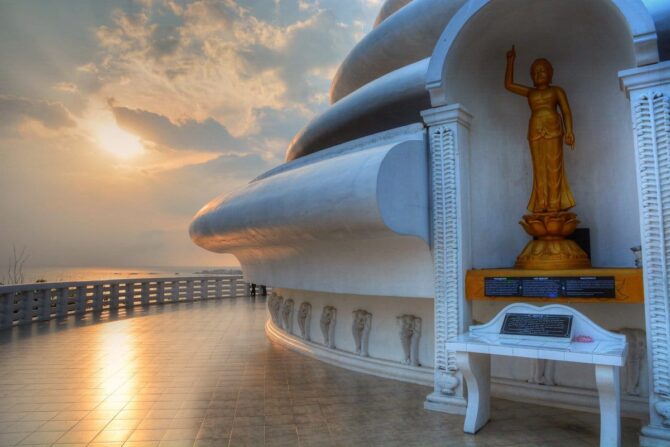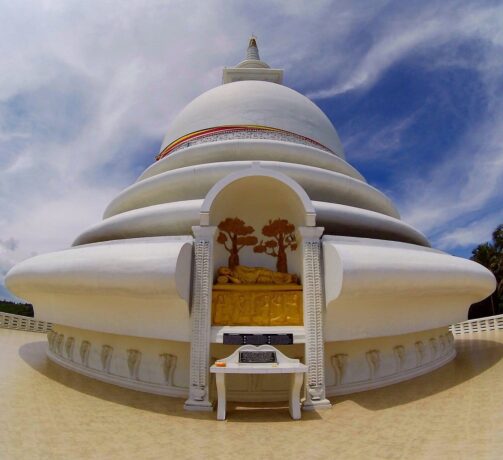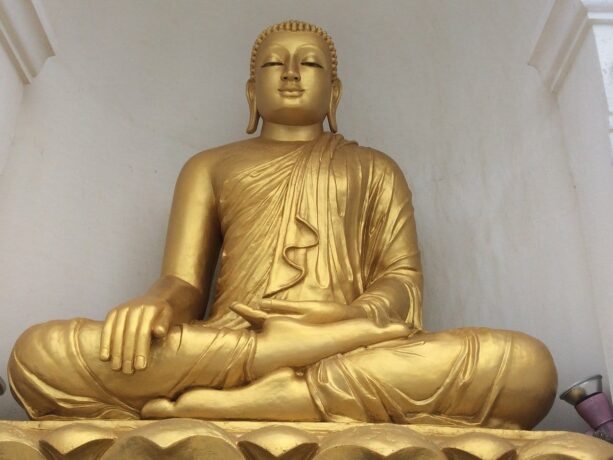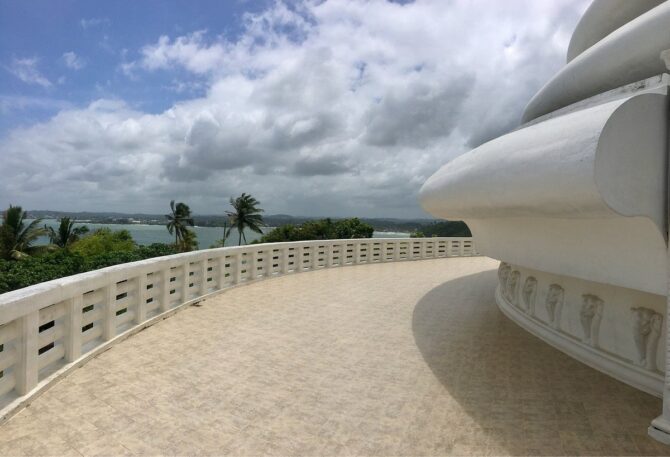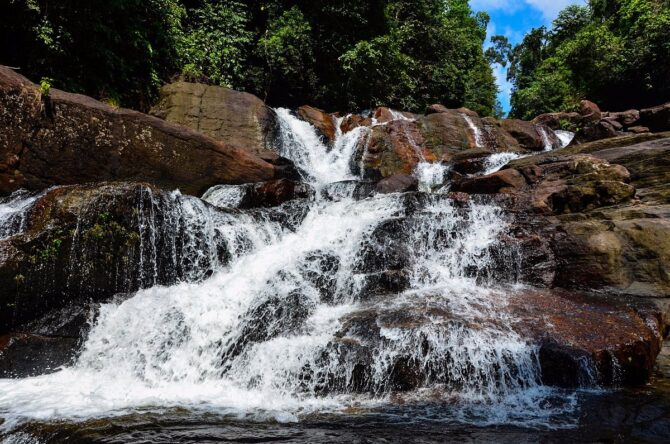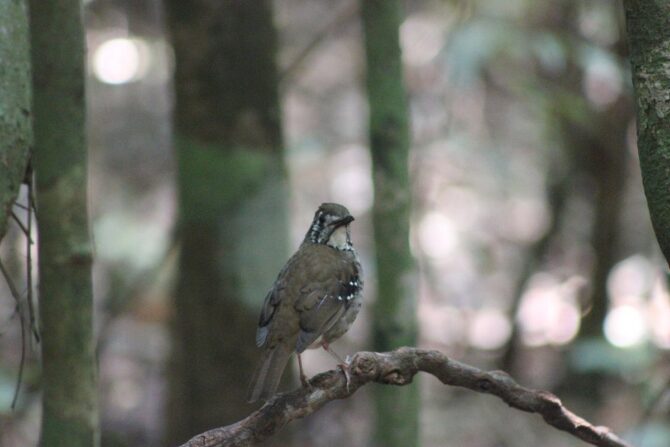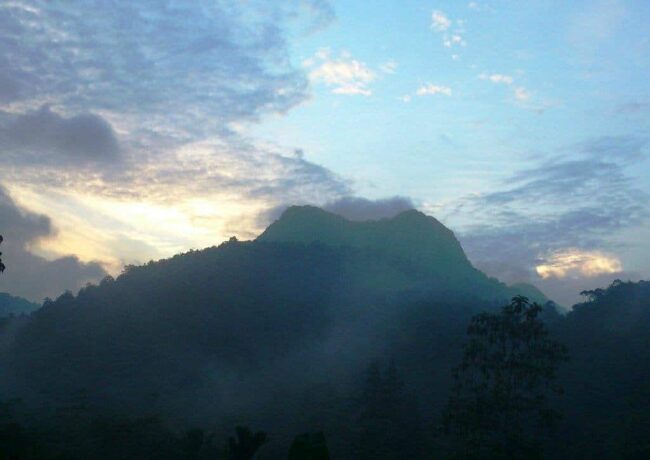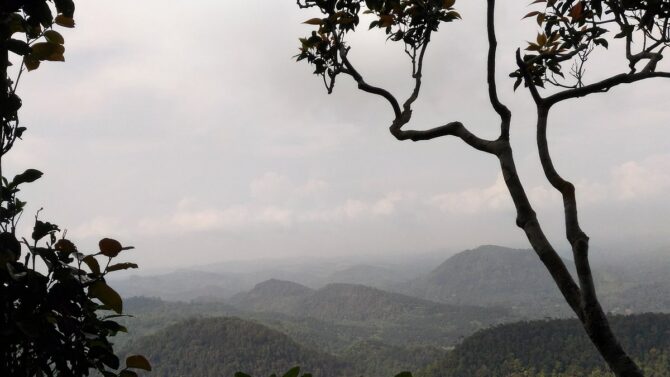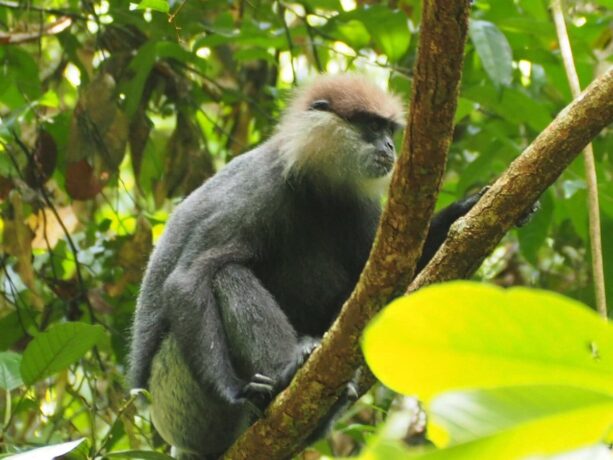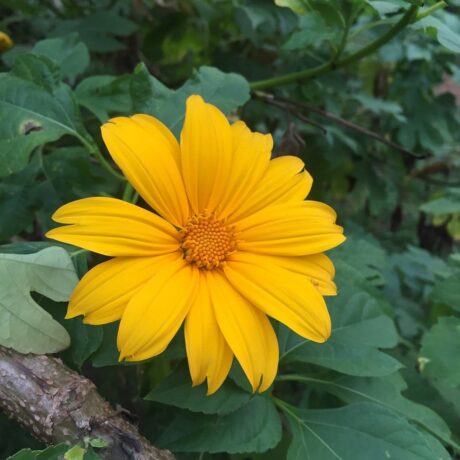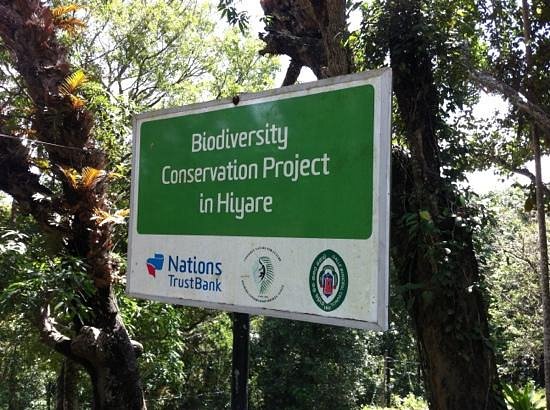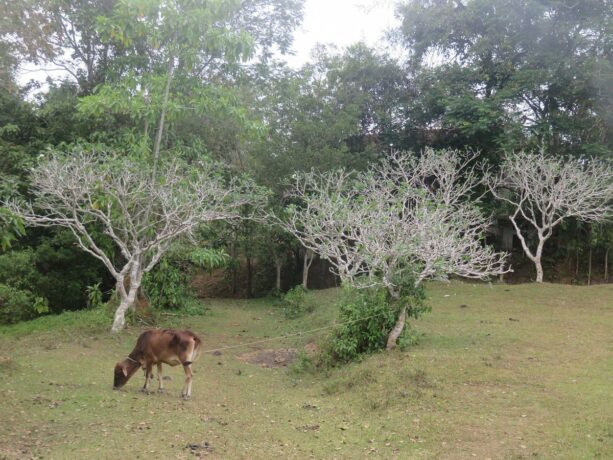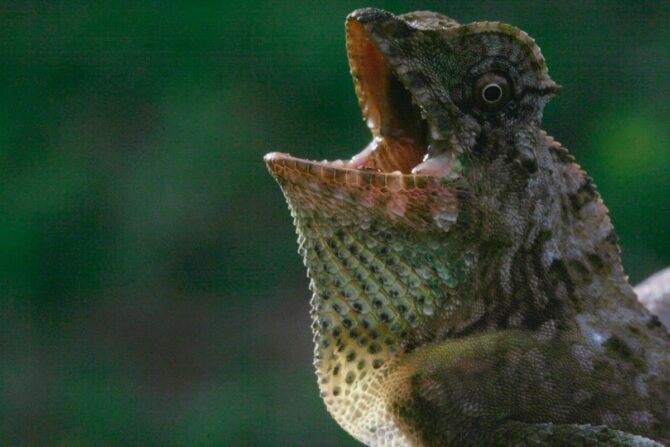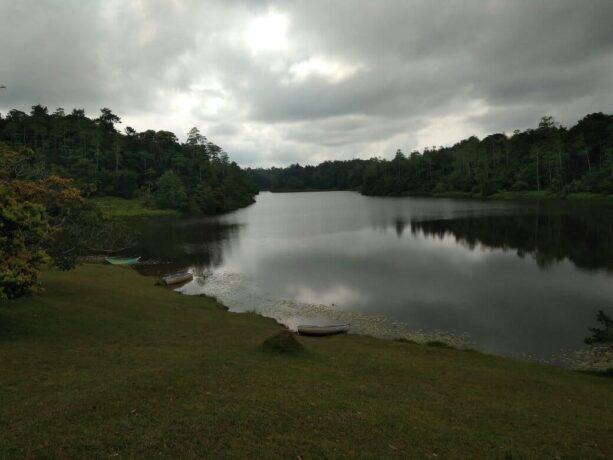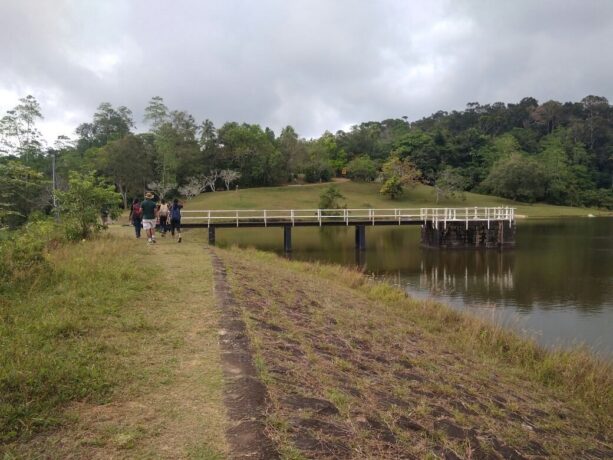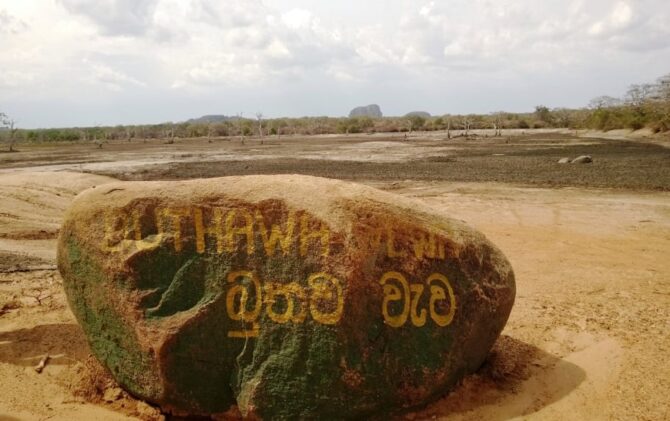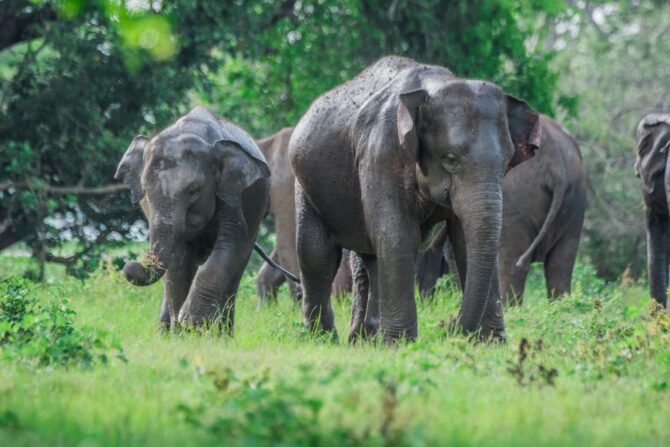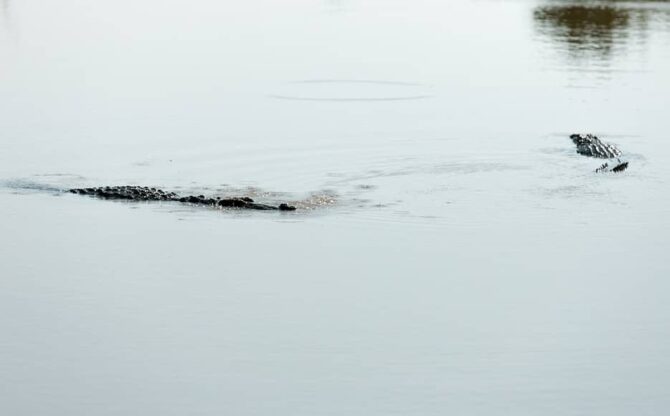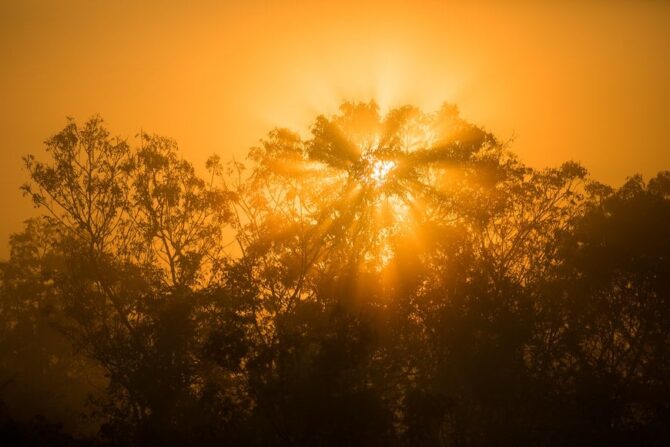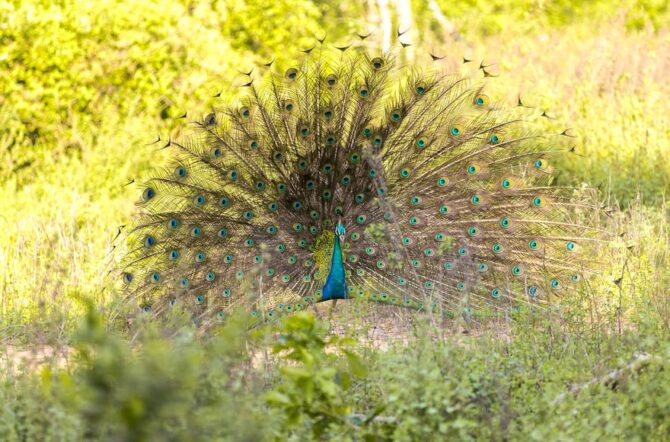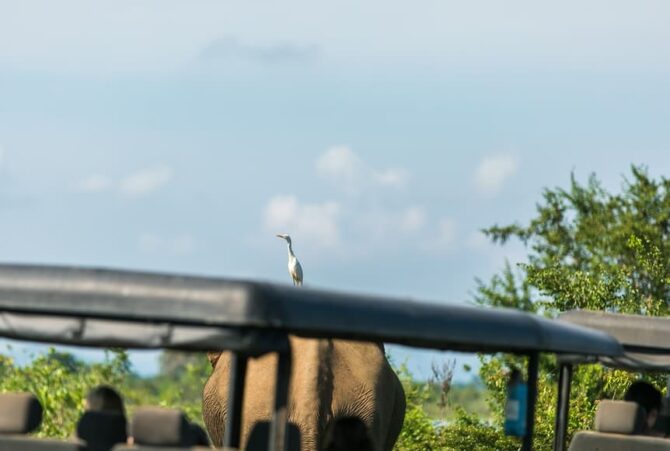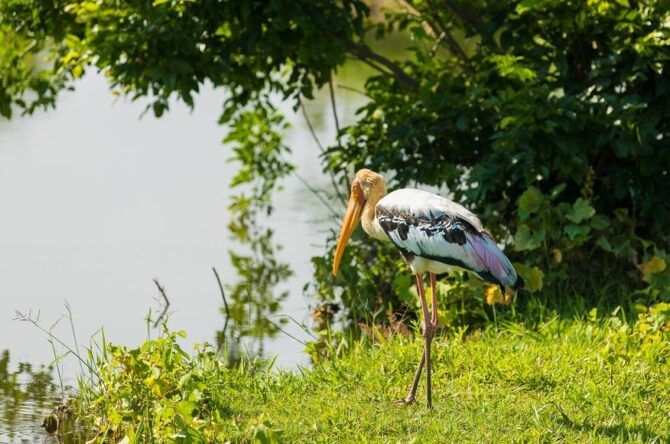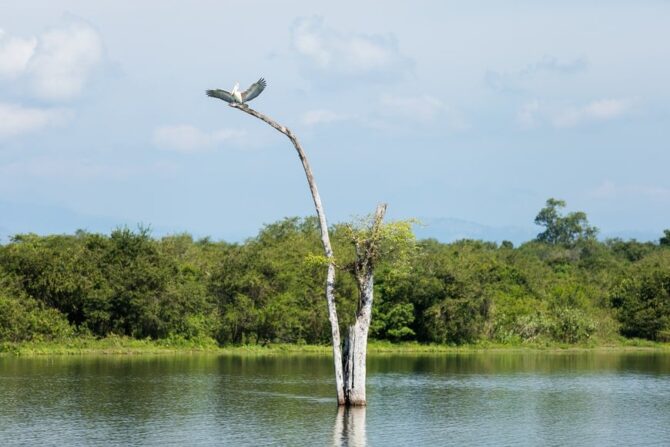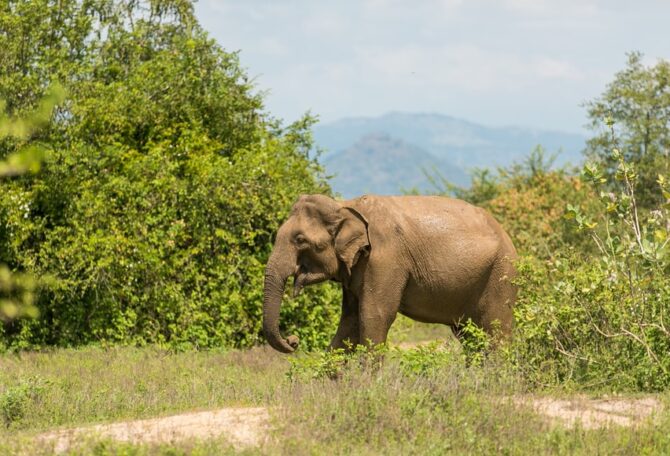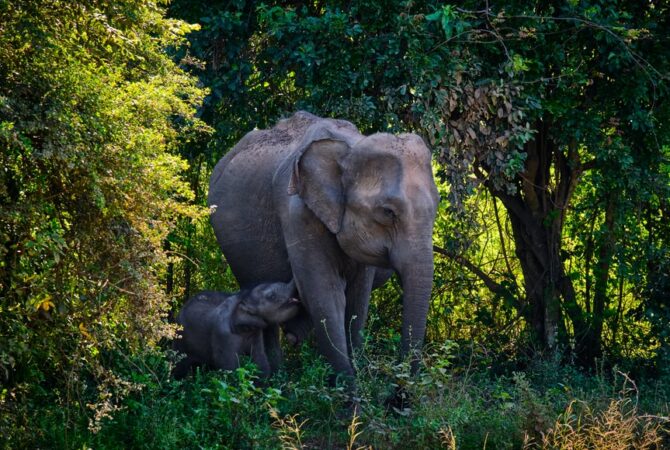Despite its relatively small size (65.61 thousand square kilometers), the picturesque island surprises with a variety of places interesting for foreign tourists. Galle is a compact city, which is home to 93.11 thousand people, rich in historical and sacred objects. The resort and port is located in the south-west of the peninsula. The distance to Colombo by road is 126 km.
What is interesting for travelers to visit in Galle?
Sri Lanka is famous for its clean sandy beaches. However, tourists come to Galle to first get acquainted with the local attractions. By the number of historical and cultural sites, the city can compete even with Colombo. Numerous tourists go to Galle for several reasons:
- visit Buddhist and Hindu temples;
- inspect the preserved buildings of the old town;
- get acquainted with the history of the fort built by the Dutch;
- go diving, surfing, snorkeling;
- enjoy the peace and tranquility of the ancient port;
- visit Sinharaja – a biosphere reserve – and other national parks in the neighborhood;
- relax on the wide sandy beaches located near the city.
The climate in Galle and the surrounding area is characterized as equatorial. During the year, the water warms up from + 27.6 to + 29.8, the air – from + 29.2 to + 31.6. The rainiest months are June (383.7 mm) and September (381.3 mm). January (86.0 mm) and February (90.9 mm) are a period when precipitation is rare. The best time to relax on local beaches and sightseeing is late autumn, winter and March.
- 1 Attractions Halle on map
- 2 Galle Fort
- 3 Galle Fort Clock Tower
- 4 Star Bastion
- 5 Klippenburg Bastion
- 6 Neptune Bastion
- 7 Flagrock Bastion
- 8 Lighthouse on the bastion of Utrecht
- 9 Aurora Bastion
- 10 Akersluth Bastion
- 11 Galle Historical Museum
- 12 Black Bastion
- 13 National Maritime Museum
- 14 Galle National Museum
- 15 Dutch Reformed Church
- 16 Anglican Church of All Saints
- 17 Sadharmalaya Temple – Buddhist Temple
- 18 Fruit and fish market
- 19 Jungle Beach
- 20 Peace Pagoda in Unawatuna
- 21 Sea Turtle Nursery
- 22 Cannelia Forest Reserve
- 23 Hiyare Forest Reserve
- 24 Yala National Park
- 25 Udawalawe National Park
Attractions Halle on map
Galle Fort
In the south of the city there is a historical object that attracts the greatest attention of tourists. Galle Fort, which is a well-preserved fortress, is close to the railway and bus stations. The first building was erected by the Portuguese in 1588, the Dutch, who replaced them, rebuilt the fortress. The construction of the fort was completed in 1649.
For a long time (about 200 years) the fortress performed a defensive function. Now visitors are presented with the preserved buildings of the fort, a museum, restaurants, hotels, shops and cafes. This is the Old Town, where you can feel the atmosphere characteristic of the XVII-XVIII centuries. Tourists visiting Galle Fort enjoy the silence of narrow sparsely populated streets and the beauty of unique buildings.
The fortress is available throughout the day. Entrance to the territory of the fort is free. The most favorable time to visit the Old Town is the dry winter and March. During this period, it is much more interesting to climb the stairs to the fortress wall, so that, walking along it, you can feel the majesty of the ancient fortification, which is considered the largest among the forts in Asia.
The historical site is included in the UNESCO list. The entrance to the territory of the fortress is possible through two gates: the main and old.
Address: Church Street, Galle, 80000
Galle Fort Clock Tower
In the north of the Old Town rises the Clock Tower, built in 1883, the height of the structure is 25.3 m. This corresponds to about 4 floors of an ordinary building. The tower, located in the courtyard of the fortress, is built of solid stone blocks. Initially, the structure served as a lighthouse.
The tower is decorated with a clock made in the medieval style. Roman numerals are a design element indicating that the structure was erected by Europeans. There is no access inside the tower. However, tourists are happy to be photographed against the background of an ancient structure.
Tower Address: Fort Clock, Galle, 80000
Star Bastion
In the northern part of the fortress wall rises one of the 14 bastions of the fort – Star. The Portuguese who erected the structure named it after Sant’Antonio. Later, the structure was renamed by the Dutch. They called the bastion the Sea. At that time, 6 guns were installed here. The first shot was fired by the daughter of Adrian Rutas, the commandant of the fortress.
The bastion, located next to the Clock Tower, became known as the Star Tower since 1667 Now it is one of the historical objects, against which foreign guests of the city like to be photographed.
Klippenburg Bastion
In the western part of the Old Town rises a fortification built by the British. The name of the Klippenburg bastion can be translated as “a fortress protruding forward”. During the reign of the British in the city, the structure played the role of a signal tower. The design was called Lloyd signal station. The owner of the bastion was Lloyd, a British company.
Now the building is in demand among tourists as a place for photo shoots. Some of the equipment used by the British has remained to this day.
Bastion Address: Rampart Street, Matara, 80000
Neptune Bastion
A small fortification is located just south of the Klippenburg bastion. The structure was built by the Dutch. Bastion “Neptune” looks especially beautiful before sunset. It is at this time that tourists gather at the structure, strolling through the territory of the fortress.
The bastion is used as a massive decoration by guests of the fort, taking selfies against the background of an old building.
Bastion address: Rampart St, Matara, 80000
Flagrock Bastion
“Signal Rock” – this is how you can translate the name of the Flagrock bastion. The structure, located at the southern point of the Old Town, was erected by the Dutch in order to warn ships approaching the port about dangerous rocks. Now from the bastion there is a base and a staircase leading to the signal platform, which attracts tourists as a place from where Sri Lankan sunsets are clearly visible.
In sunny weather, locals surprise travelers with the skill of diving from a cliff into the ocean.
Bastion address: Rampart St, Fort Galle, 80000
Lighthouse on the bastion of Utrecht
In the south-east of the fort is a bastion named after the Dutch city of Utrecht. On the structure rises one of the most interesting historical objects of the fortress – a high lighthouse. The first structure, erected from iron plates and wood, was built by the Dutch in 1848, when the height of the lighthouse reached 24.4 m.
The design was created by English engineers according to the project of Alexander Gordon , a British architect. The light from the lighthouse spread over a distance of 19 km. In 1936, a sad event occurred – the structure burned down. It took 4 years to restore the structure.
The new lighthouse was erected in 1939 The height of the concrete structure, painted white, is 26.5 m. The reflector installed on the lighthouse spreads the beam at a distance of 87 km. The design is controlled automatically by a computer program. Tourists certainly stop at the lighthouse to take a selfie.
The lighthouse is available for visiting. From the upper platform of the structure, you can look at the ocean and some quarters of the Old Town for a long time.
Lighthouse Address: Hospital Street, Galle, 80000
Aurora Bastion
On the eastern part of the fortress wall there is a bastion named after Aurora, a Roman goddess. Until 1760, 6 cannons were installed here. Tourists gather at the building for the colorful sunsets, which from here look the most bright and picturesque, in comparison with other points of the Galle Fort. Here you can also see in detail the ancient port.
Aurora Bastion Address: Hospital St, Matara, 80000
Akersluth Bastion
Not far from the old port is the Åkersluth Bastion. The structure is located in the east of the fort. In the past, 7 guns were installed on the structure. The bastion is named after the hometown of V. Koster – the Dutch commandant of the fortress. Later, when the city was ruled by the British, the bastion played the role of the official residence of the British port manager.
The structure is also known as the place where the first breadfruit tree in Halle grew. Now groups of curious tourists gather here for photo shoots. It offers the most beautiful view of the old port.
Bastion Address: Hospital Street, Matara, 80000
Galle Historical Museum
Abdul Ghaffar, who lived in Galle for a long time, is known as a collector of antiques. Artifacts collected by an amateur historian are on display at the Galle Historical Museum. Most of the exhibits are associated with the period of Dutch colonization. The collection is housed in the building of the restored mansion. Among the exhibits, the greatest interest of visitors is caused by ancient objects of both the era of colonialism and those that were made much later:
- oil lamps;
- hookah hose;
- jewelry;
- radio receiver;
- irons;
- pistols;
- glasses;
- cigarette lighters;
- swords;
- combs;
- women’s bags;
- devices for making ice cream and butter.
The museum simultaneously serves as an antique store. If desired, visitors can purchase their favorite exhibits. In the courtyard of the historical museum there is a restored well, built by the Dutch in 1763, this is the most valuable exhibit of the cultural institution.
You can visit the cultural institution from 9:00 to 18:00. Admission is free. The museum can be visited throughout the calendar year.
Website: http://www.galleheritage.gov.lk/en/portfolio/historical-mansion-museum/
Address: 39 Leyn Baan Street, Galle 80000
Black Bastion
The construction of fortifications in the fort was started by the Portuguese. In 1505, the construction of the Black Bastion, located near the harbor in the north-east of the old city, was completed. Historians believe that it was with this structure that the construction of the fort began. In 1640, the Dutch expanded the territory of the bastion and fortified it.
According to legend, the building got its name because of the dark smoke that enveloped this place after shots from cannons. Archaeologists have discovered a tunnel that was used as a secret entrance to the territory of the fort. Excavations are still ongoing. At the end of the colonial era, the Black Bastion was used as a prison.
Most tourists visit this place during the winter months. Entrance to the bastion is free.
Address: 26H9+JPM, Galle 80000
National Maritime Museum
A little to the south of the port there is a cultural institution, which is visited by every tourist who gets acquainted with the fort. The National Maritime Museum was opened to the public in May 1992 The cultural institution is located in the building of the former Dutch warehouses, which were built in 1671. The tsunami destroyed the museum building. The Dutch took an active part in the restoration of the cultural institution.
The museum reopened its doors in March 2010 The territory occupied by the halls is 3.7 thousand square meters. m. In the Maritime Archaeological Museum – as the institution is officially called – exhibits telling about the history of Sri Lankan navigation are presented:
- models of boats and ships;
- anchors;
- ropes;
- whale skeleton;
- beer barrels and mugs;
- artillery guns;
- amphorae, coins, statues found in the sea.
The museum receives visitors throughout the year from 8:30 to 4:50. Ticket price: 5 dollars or 1015 rupees.
Address: Queen Street, Galle 80000.
Website: http://www.museum.gov.lk/
Galle National Museum
In the northern part of the fort there is a building erected by the Dutch in 1656 Now there are halls of the National Museum of Halle, founded in March 1986. Tourists who leave reviews often call the museum local lore. Exhibits collected in the halls confirm this assessment:
- antique wood carvings;
- ornaments made of turtle shells;
- traditional masks used by locals in rituals;
- weapons used in battles by Dutch soldiers.
The doors of the museum are open daily from 9:00 to 17:00. The ticket price is Rs 300.
Address: Church Street, Galle 80000
Website: http://www.museum.gov.lk
Dutch Reformed Church
On the territory of the fort is the oldest temple of Galle. The Kerk Grotto – the Dutch Reformed (or Reformed) Church – was built in 1754. Some of them report a Dutch officer who invested his own funds in the construction. Others call Gertrude Le Grande, the wife of the commandant of the fortress, who spent her savings on the construction of the church.
In 1830, the temple was rebuilt by the British colonialists. However, the church retained its former style. Modest decoration is the main feature of the sacred structure. The decoration of the temple are multi-colored stained glass windows placed on the western facade of the building. The floor is equipped with several tombstones. Noble Dutchmen or their children who suffered from incurable diseases were buried in the temple.
Above the main entrance there is a small organ. Next to the preacher’s pulpit is a white grand piano. A local musician performs “Ave Maria” on it. Masses are held in the temple every Sunday. In 2001, the Dutch began the restoration of the building. Now the restoration work is completed.
You can visit the church on any day in the daytime. Admission is free.
Church address: Church St, Galle 80000
Anglican Church of All Saints
Not far from the Maritime Museum rises a tall brown building of the Anglican Church. The British built the Church of All Saints in 1871 The sacred structure was erected in the Victorian Gothic style, taking into account the Sri Lankan features. The inner hall of the temple is decorated with glass stained glass windows, vaulted arches and powerful columns.
Services are held regularly on Sundays at 9:00 or 11:00. Visitors listen to Masses sitting on comfortable benches. Admission is free. Visitors can donate funds for the restoration. In
website: https://www.allsaintsgalle.org/
Address: Church St. Galle 80000
Sadharmalaya Temple – Buddhist Temple
For a long historical period, religious buildings were built in Halle by the Dutch and The British. This explains the existence of the only Buddhist temple in the city. The Sadharmala Temple is located in the western part of the fort near the Klippenburg Bastion.
The Buddhist temple was erected in 1889 with donations from S. Wickramasinghe, a noble Sri Lankan. A white stupa is installed in front of the construction. The interior of the temple includes the attributes of the Buddhist faith:
- many statues;
- a spacious prayer hall;
- ceiling and wall paintings;
- a statue of a reclining Buddha.
Access to the temple is free. The doors of the religious building are open to visitors from 8:00 to 20:00.
Address: Parawa Street, Galle 80000
Fruit and fish market
Tourists who get acquainted with Galle, be sure to look at the local market. It is often called Dutch, which is easily explained by historical fact. Immigrants from the Netherlands built a tiled roof, which now adorns the market. Here you can buy a variety of local products:
- Sri Lankan spices;
- cottage cheese;
- medicinal herbs;
- exotic fruits;
- tropical vegetables.
Handicrafts and footwear are also sold on the market. Opening hours: 8:30–19:30. Connoisseurs advise to visit the market in the morning.
Address: Sea Street, Galle 80000
Jungle Beach
A lot of interesting tourist sites are located in the vicinity of Galle. Jungle Beach is one of the most popular places for lovers of pastime on the ocean coast. The site, covered with dense light brown sand, is located 5.7 km east of Galle. The nearest resort is Unawatuna.
The beach consists of two sections separated by a stone strip. There are no amenities that are usually installed for a comfortable pastime of vacationers. The length of the first section is 100 m, the second is about 50 m. The width of both beaches is 20 -25 m. As protection from direct sunlight, vacationers use the crowns of tropical trees growing here.
The depth builds up slowly. Thanks to the coral reef located in the bay, the ocean remains calm. Waves are rare. These places were chosen by fans of snorkeling. Diving with a snorkel and a mask, you can see moray eels, sea urchins, rays and other inhabitants of the ocean. In the morning the beach is sparsely populated. Vacationers begin to actively gather here in the afternoon. The site is quite suitable for swimming in the ocean.
The beach is in demand among young Sri Lankans who play football or beat drums here. This picturesque corner is popular among fans of photo shoots. They come here to take pictures of the ocean constantly changing color. A wide path leads to the beach, passing through the jungle.
Most often, tourists get here from Unawatuna by tuk-tuk or taxi. In the same way you can get there from Halle. Motorists get to the beach from Galle on the road “Galle Road”. After crossing a wide river, turn to the road leading to the Ramassala Nature Reserve. At Jungle Village, a four-star hotel, you need to turn onto jungle road, which leads to the beach. The most suitable time to visit this picturesque place is the dry season.
Peace Pagoda in Unawatuna
Since the 1930s, Buddhist monks from Japan have built Pagodas of the World in different places on the planet. One of them was built in 2005 south of Jungle Beach. The pagoda is one of the three Buddhist stupas erected in Sri Lanka. The peculiarity of the design, made in the form of a bell, is a gilded surface. The stupa, located on the hill of Rumassala, is surrounded by several statues.
From the platform surrounding the temple and playing the role of an observation deck, the quarters of Galle Fort are clearly visible. From here you can also look at the yachts plying in the bay. The pagoda has a trail starting at the highway. The temple is available for visiting at any time of the day. To go inside the Pagoda mira, there is no need to pay a fee.
Tourists and believers come to the temple both in winter and in summer. The path to the Peace Pagoda is the same as to Jungle Beach. The difference is that after Jungle Beach you should continue to the turn to the sacred place.
Address: Jungle Beach Road, Unawatuna
Sea Turtle Nursery
2.8 km northwest of Galle Fort is a unique natural site. There is a nursery of sea turtles, which receives visitors daily in any season. The problem of preserving this species of animals is acute in Sri Lanka. First of all, this applies to the period of laying eggs. Future newborn turtles are in danger. All sorts of robbers dig up, eat or sell eggs. Turtles will not be able to be born and return to the ocean.
Volunteers, who are now much fewer due to the coronavirus pandemic than before, bring eggs collected on the coast to the nursery. The nursery was also founded with the aim of rescuing injured marine animals. On the territory of the institution, pursuing noble goals, tourists can explore several interesting objects:
- 6 small pools with sea turtles;
- rehabilitation center;
- enclosures with tropical parrots.
Guests are pleased to participate in the turtle feeding ceremony. This can be done either early in the morning or in the evening. Visitors are allowed to hold adult turtles in their hands. The nursery contains 5 varieties of marine animals. Small turtles after birth are released into the ocean.
Tours of the nursery are conducted in English by an employee of the institution. The story includes information about the history of this place, the problems associated with the cultivation of sea turtles, the peculiarities of the life of these animals. The place where the nursery is located is one of the most picturesque in the vicinity of Galle. Nearby is Lake Mahamodar, a sandy beach, impenetrable jungle, the ocean and a pier.
The cattery accepts guests daily from 8:00 to 18:00. The cost of visiting is 500 rupees (for children), 1000 rupees (for adults). Even rainy weather does not repel tourists from visiting this unusually interesting place. To get here from Galle by car, you need to go along the road “Colombo-Galle”. Leaving behind the Kepa Ela River, you should immediately turn left and continue to the nursery.
Address: 417 D/1, Colombo Road, Mahamodara, 80000
Cannelia Forest Reserve
42.8 km north of the center of Galle is an extensive protected area. Among the lowland rain forests of Sri Lanka, Cannelia is considered the second largest. The total area of the protected area is about 100 sq. km. The protected area extends between two rivers: the Niwala and the Jin Ganga. The reserve was founded in 2004 to restore the rainforest, cut down in the 1970s. On the territory of the natural object you can see many plants and animals:
- mammals – 86 species;
- birds – 26;
- snake – 36;
- plants – 319, including 52% endemic.
Several tourist routes are laid on the territory of the protected forest. Going on guided hiking trips, guests get acquainted with local natural sites:
- from Anagimala – a full-flowing waterfall;
- Navada is a giant tree; next to it there is an observation deck;
- the summit of Mount Kabbalah;
- giant vine;
- Narangas Ella Waterfall.
The period from the beginning of December to mid-March is the most suitable time to visit the forest reserve. The ticket price is Rs 756-378. Access to the reserve is open from 8:00 to 17:30. From Galle, motorists drive here on the Cannelia Road.
Address: Kanneliya Rain Forest, Narangas Waterfall Road.
Hiyare Forest Reserve
Another protected area is located 20.8 km northeast of Galle. The area of the protected area is not large – 243 hectares. However, the Hiyare Forest Reserve, founded in 2002, is home to a unique number of endemic and rare species of birds and animals:
- mammals – 29;
- snails – 28;
- freshwater fish – 33;
- amphibians – 18;
- birds – 118;
- lizards – 34;
- dragonflies – 55;
- butterflies – 78.
On the territory of the protected area there is a small lake. Tourists are happy to sail here on boats. There are many hiking trails through the forest reserve. As in other natural areas, it is worth coming to Hiyar in the dry season to appreciate the beauty of the local natural landscapes.
From Galle there are two roads that pass one into another – “Udagama Road” and “Hiyare Road”.
Address of the forest reserve: Ihala, Hiyare
Yala National Park
There are 20 national parks in Sri Lanka. One of the most famous and largest is located 159 km east of Galle. Yala, a national park founded in 1938, covers an area of 979 square kilometers. The protected natural area is home to many species of fauna and flora:
- reptiles – 46 species;
- birds – 215;
- amphibians – 18;
- fish – 21.
To get acquainted with the inhabitants of the national park, jeep safaris are organized. Most tour groups depart from Tissamaharam, a compact village next door to a national park. Jeep safaris are organised by local hotels and guest houses. During a trip to the national park, tourists see a variety of animals:
- leopards;
- hidden agam;
- calots;
- fishing cats;
- Ceylon elephants;
- red thin lorises;
- macaques;
- buffalo and others.
If desired, jeep safari participants can visit Kirinda Beach, located in the south of the park. Experienced travelers advise motorists to get from Galle to Tissamaharam. The path follows the roads: “Uragama Road”, Southern Expy and “Airport Road”. Jeep safari time is 6:00–18:00. Duration – from 3 hours to two days (with overnight stay). The cost for one participant is 40-50 dollars.
Park address: Yala National Park, Hambantota
Udawalawe National Park
In June 1972, 128 km northeast of Galle, there were extensive “possessions” of Udawalawe. The total area of the national park is 308.21 sq. km. The protected area was created to protect the local fauna and flora affected in these parts after the construction of the reservoir. Among the rare plants here is found Satin and Ebony. The fauna of the national park is even more diverse:
- mammals – 39 species;
- amphibians – 12;
- fish – 21;
- birds – 184;
- butterflies – 135;
- reptiles – 33.
In the hotels of the town of Udawalawe, located next to the park, from 6 am to 6 pm, jeep safaris are organized through the territory of the protected area. The cost for one participant is 3.19–4.91 rupees. Duration – from 3 hours. Tourists actively come here from the beginning of December to the end of March.
The way from Galle passes along the roads: Uragama, Southern Expy, Embilipitya–Nonagama. In the town of Embilipitia, turn onto the Shuga-fakori road and continue to Udavale.
Website: https://www.udawalawesafarifun.com/
Address: 7th mile post, Udawalawa 701 90
Galle and surroundings – a corner of Sri Lanka rich in historical and natural sites
The island attracts tourists as a paradise for fans of pastime on the beaches. However, do not forget that Sri Lanka is an ancient country rich in historical events. A large mark on the peninsula was left by the colonialists. The equatorial climate favors the creation of national parks and protected areas. All of the above can be found in Halle and the surrounding area. This corner of Sri Lanka will help curious travelers discover historical and natural sites that are little known to tourists who come here for fun on the water and beaches.

